Studio Views
SHARE THIS
STORY HIGHLIGHTS
- Individuals from across the globe have moved to Texas specifically to be part of UTSA’s M.F.A. program.
- Space in the Arts Building and on West Campus was set aside to allow graduate students to create their artwork.
From the Fall/Winter 2018 Issue
President Eighmy speaks frequently about the value of intercultural knowledge and world engagement, and few places on campus embody those ideals quite like the graduate art studios, dedicated work spaces created specifically so that UTSA’s fine arts graduate students can work unhindered to express themselves. Follow along as we peer into the studio spaces of nine students enrolled in the multimedia-focused M.F.A. program. Some work in cozy studios on the fourth floor of the Arts Building, while others hone their craft at the Sculpture and Ceramics Graduate Studio on West Campus. Through painting, photography, drawing, sculpture, woodworking, performance, mixed media, and more, these artists offer incredibly unique perspectives while embracing various forms of conflict—conflicts of culture; conflicts of comfort; conflicts of chemicals; conflicts of junk, gender, and judicial negligence. Let the studio tour begin.
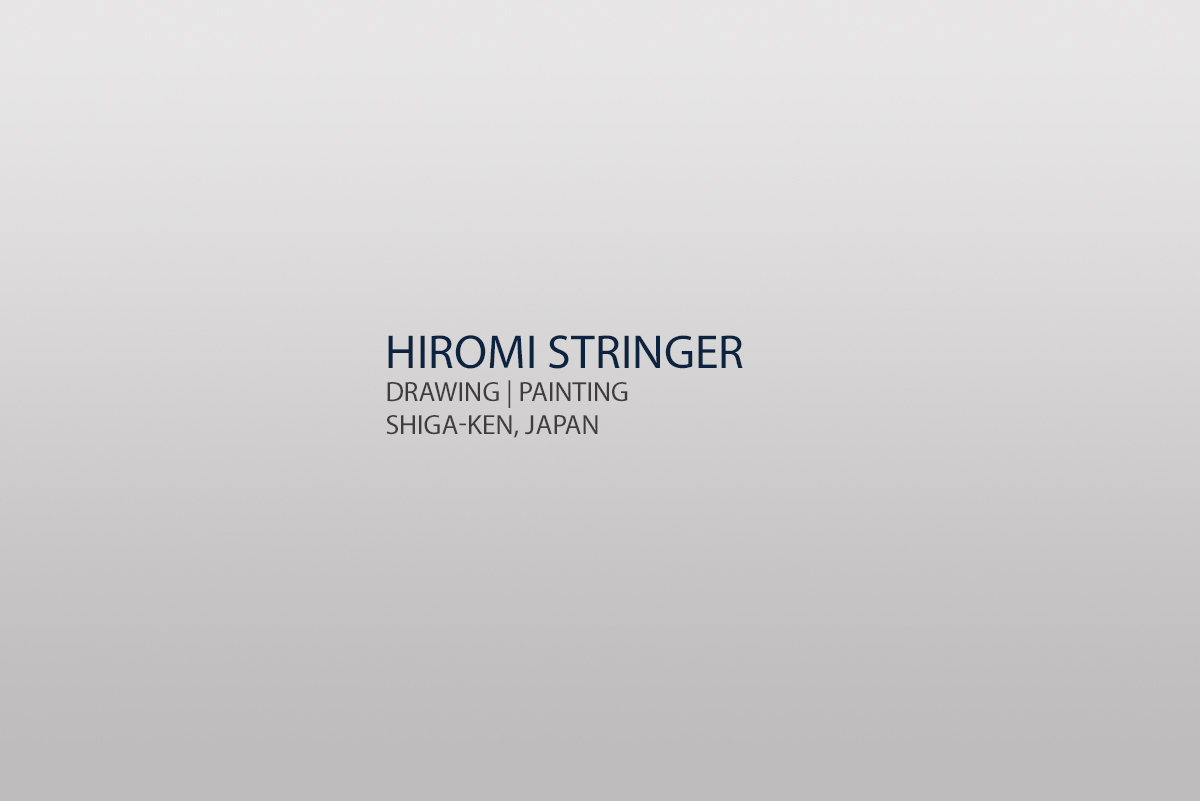
Hiromi Stringer
Drawing | Painting
Shiga-Ken, Japan
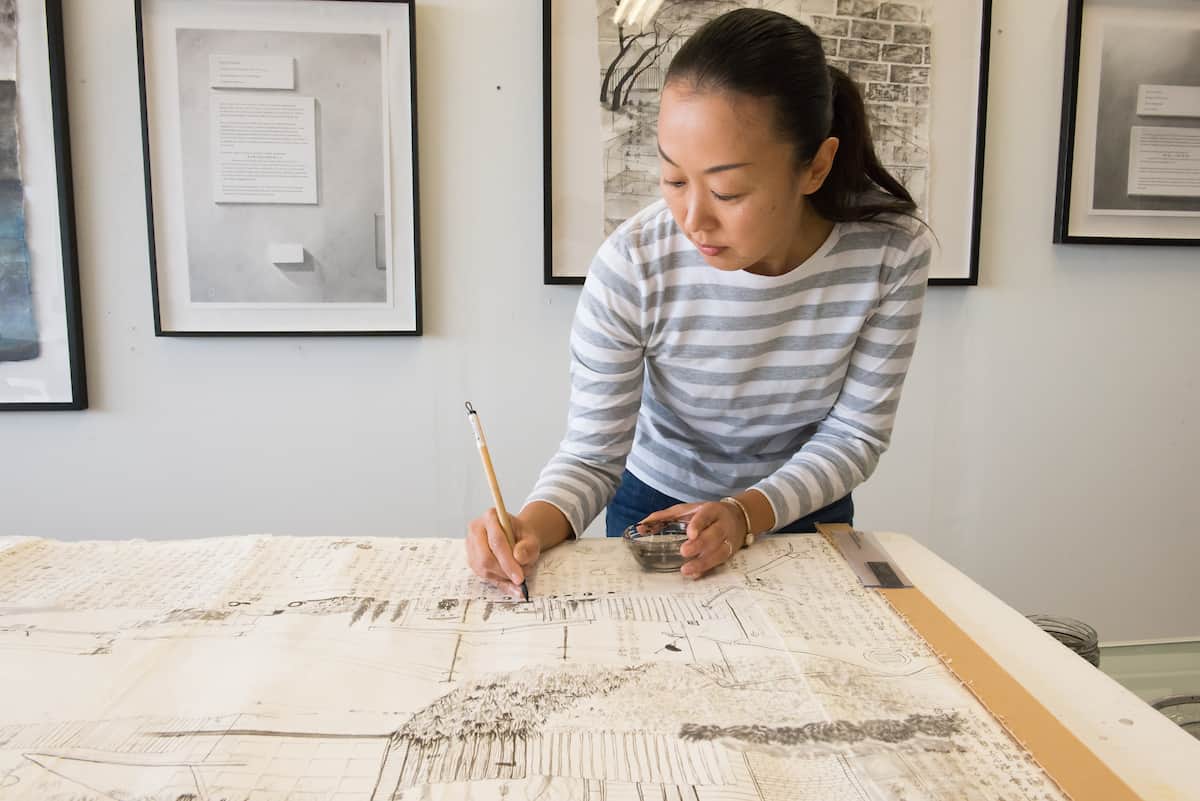
Seeking a change from her life as a “really regular office worker” in Japan, Hiromi Stringer moved to the United States in 2008. She experienced a significant case of culture clash when she arrived in South Texas, but she found a clever way to broach that experience in the M.F.A. program at UTSA.
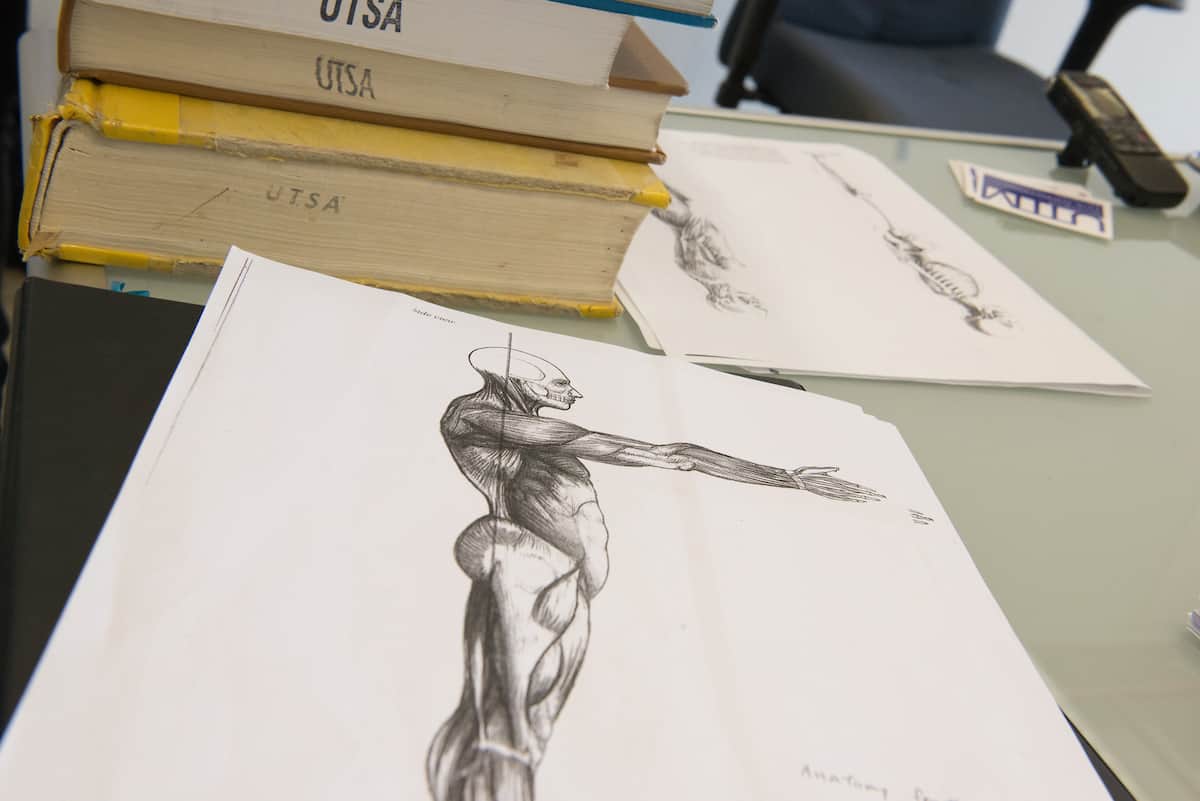
Stringer enjoys collecting antique books, and one of them is a 200-year-old English-language textbook that once belonged to a man named Shoei Umeyama. This is the name she would give the fictional character who would become the basis for her artwork. In Stringer’s artistic vision, Umeyama is a scholar who travels through time from ancient Japan to modern-day San Antonio.
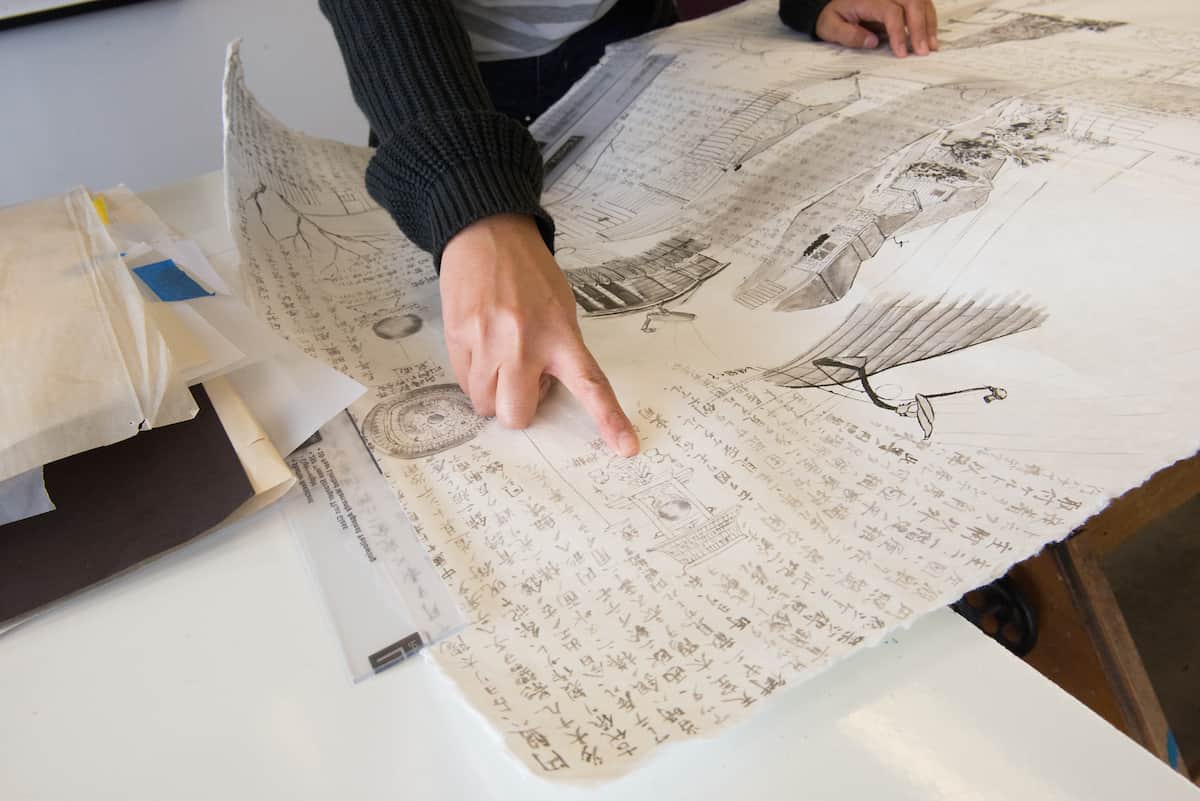
“I don’t know anything about the actual Umeyama, but I started to think about what he would think if he sees this world. If somebody doesn’t know anything about electricity, the water system, the internet, or satellite dishes, how would he react?”
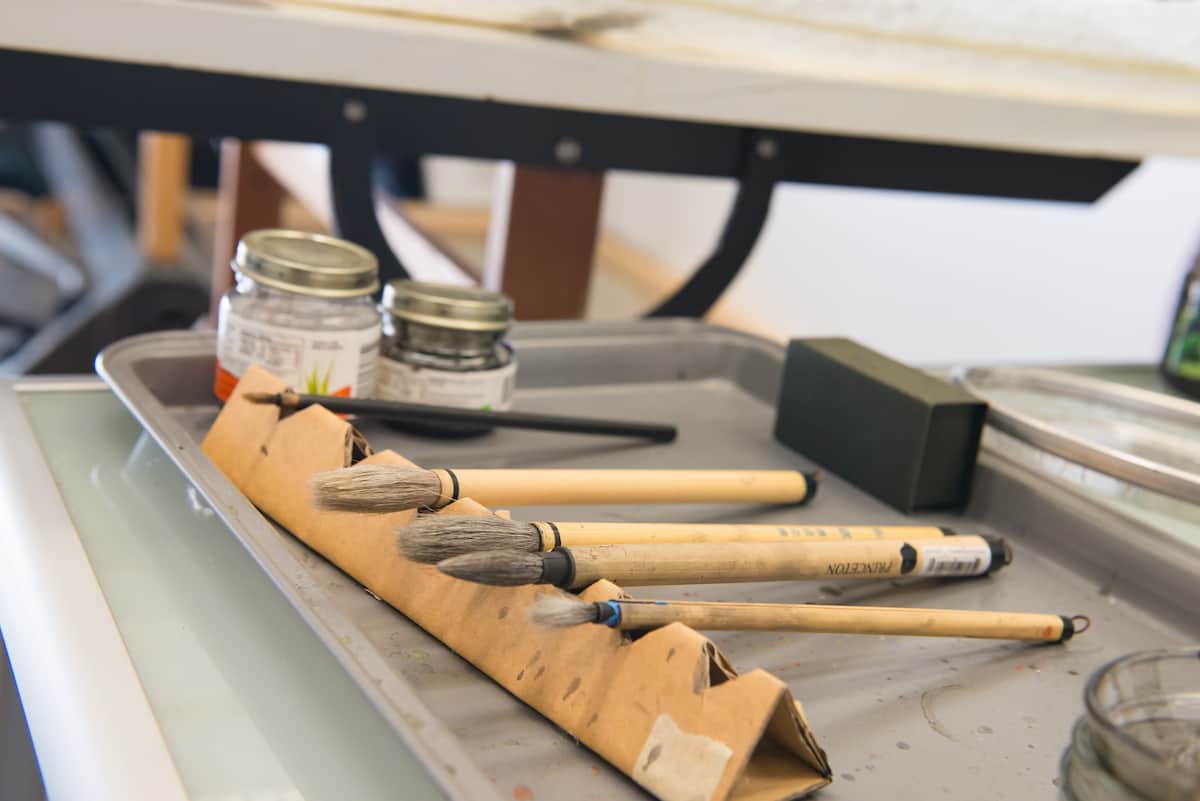
Filling large sheets of washi, meaning “Japanese paper,” made of rice, Stringer illustrates Umeyama’s detailed observations in sumi-e ink wash painting. Applying his knowledge of 19th century Japan, the time traveler makes educated guesses about the significance of mundane mainstays like fire hydrants and traffic cones as well as impressive destinations like Whataburger restaurants and the H-E-B water tower visible from Bandera Road and Loop 1604.
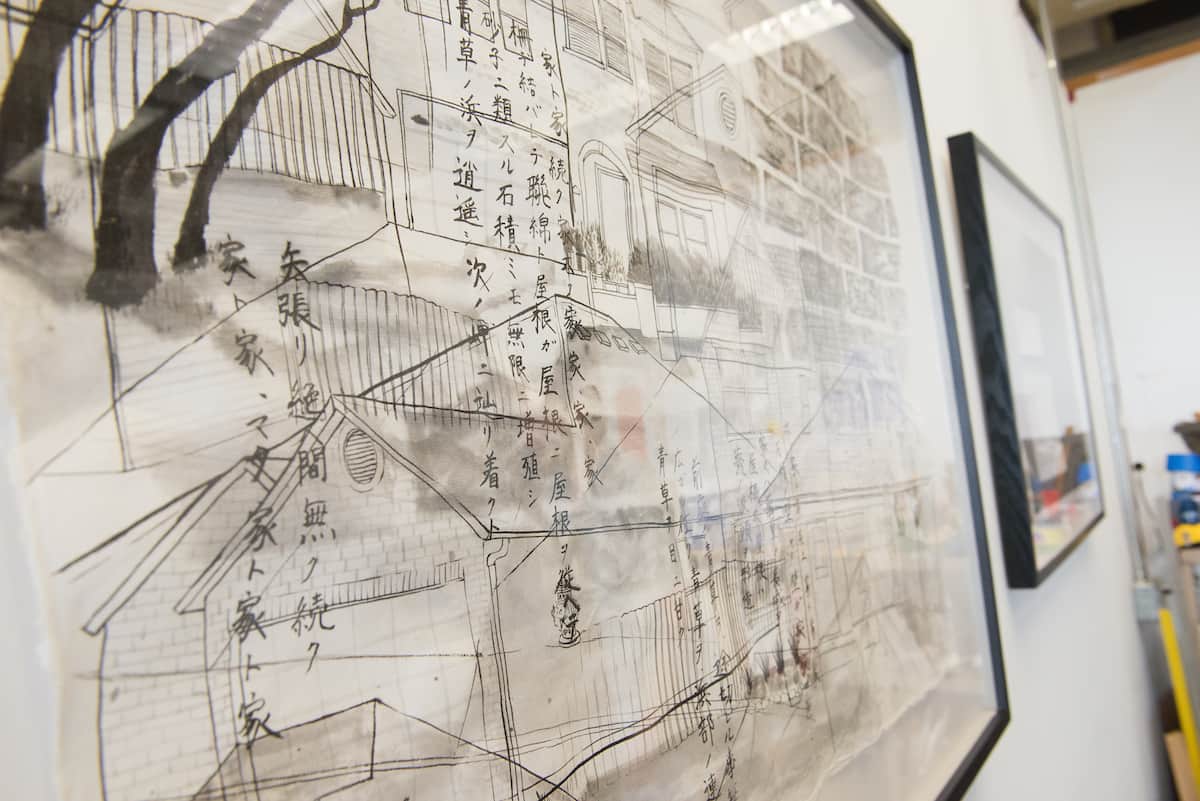
Through imagination and subtle humor, Umeyama’s notes are Stringer’s way of expressing what it’s like to be a Japanese-American in San Antonio. The “reports” are collectively known as the Umeyama Time Teleportation Museum. Stringer’s artwork has been exhibited at several galleries in Texas and Japan, perhaps most notably at Cinnabar Gallery in the Blue Star Arts Complex.
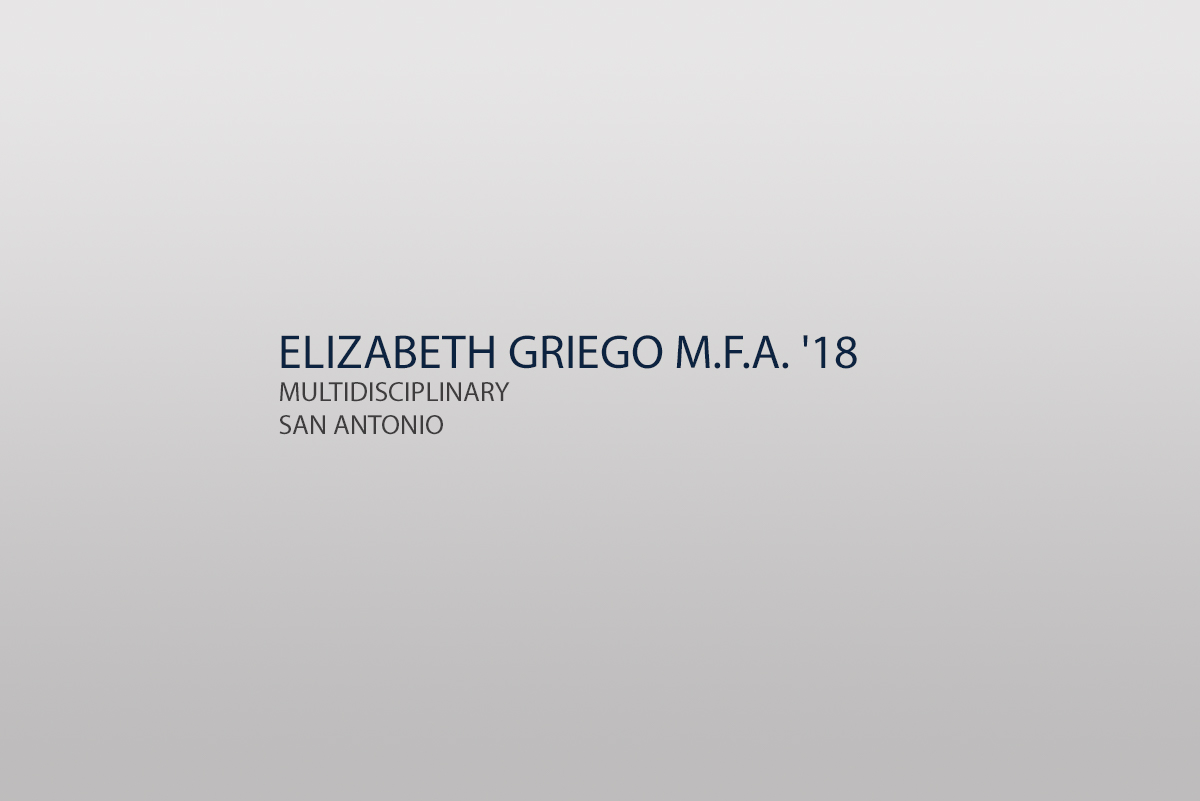
Elizabeth Griego M.F.A. '18
Multidisciplinary
San Antonio
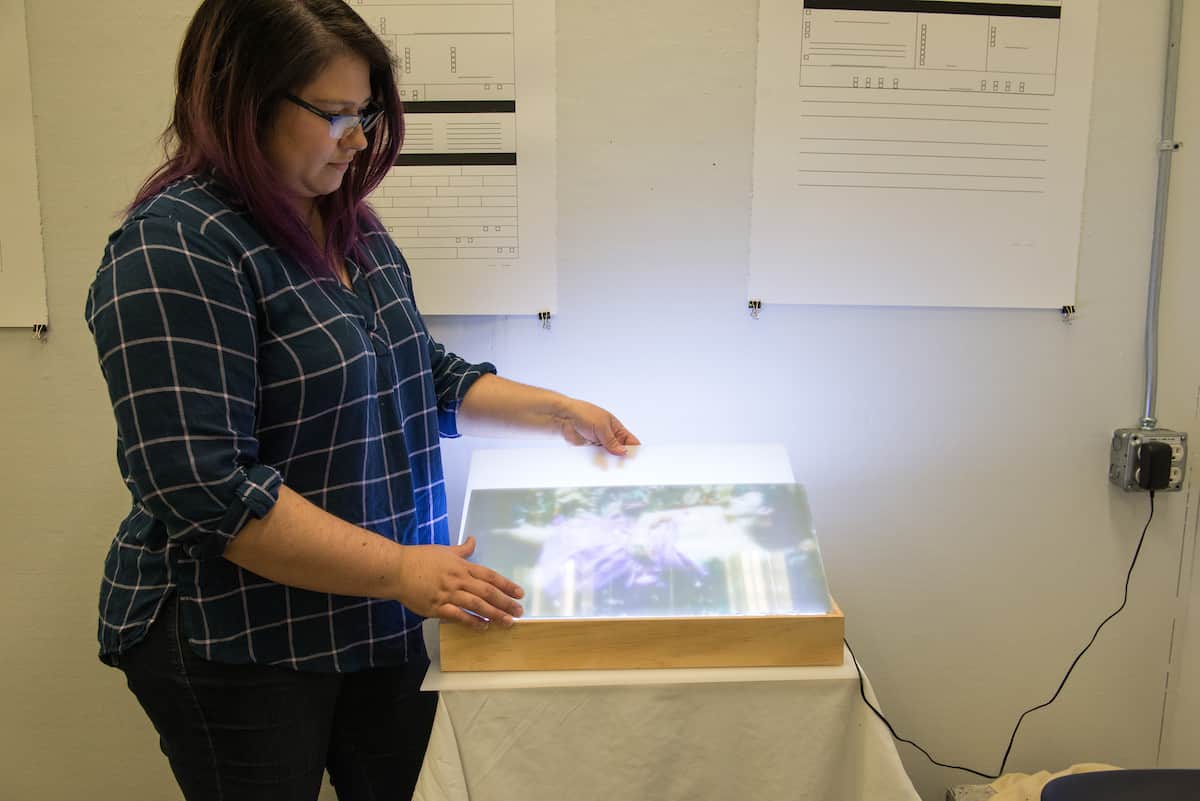
Elizabeth Griego earned her M.F.A. in May 2018. Her artwork has often dipped into social and political confrontation, but the series she’s creating in this moment resonates with great relevance in the wake of the #MeToo movement. It is based entirely on the culture of sexual assault.
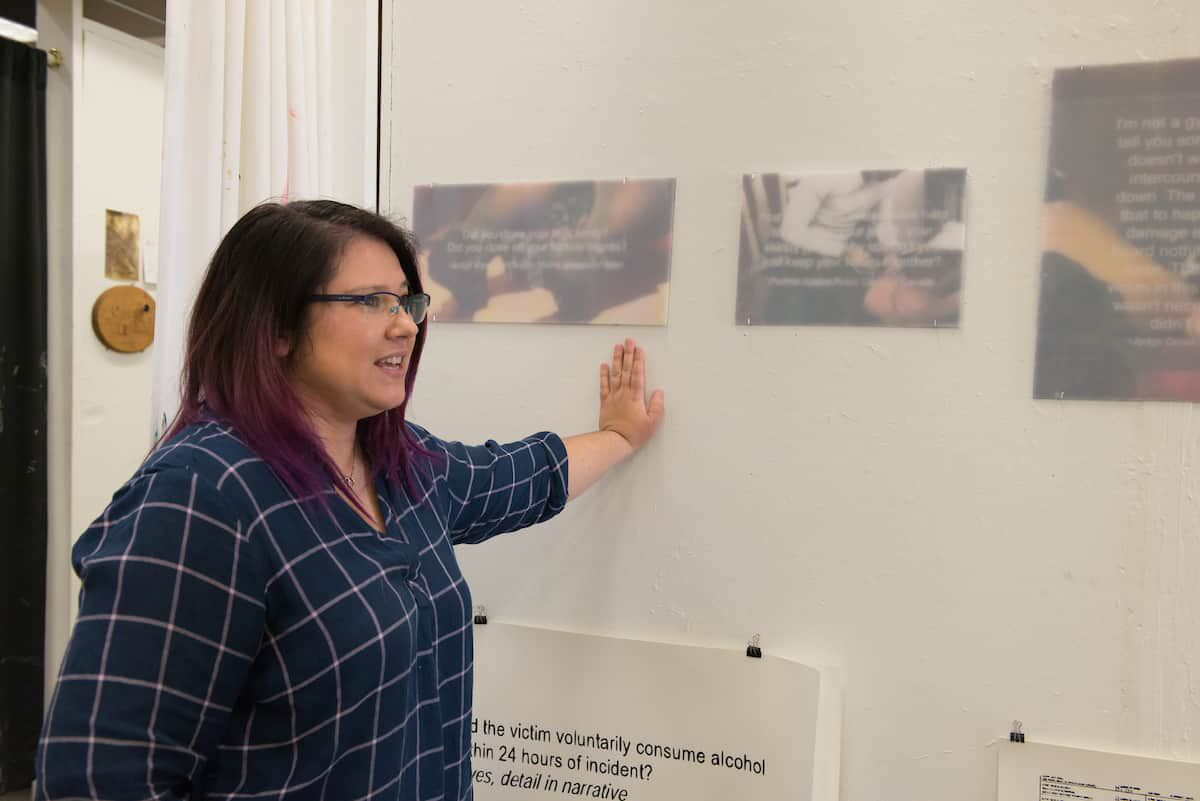
Among her works are a collection of victim-blaming statements that judges made in assault cases. She’s set them against the backdrop of disturbing images from the dark web, such as a woman’s limp arms being pinned down. She put the photos behind foggy Plexiglas to force viewers to look closely at each one. “These are situations that people want to keep on the hush,” she explains. “This is my way of having them confront it.
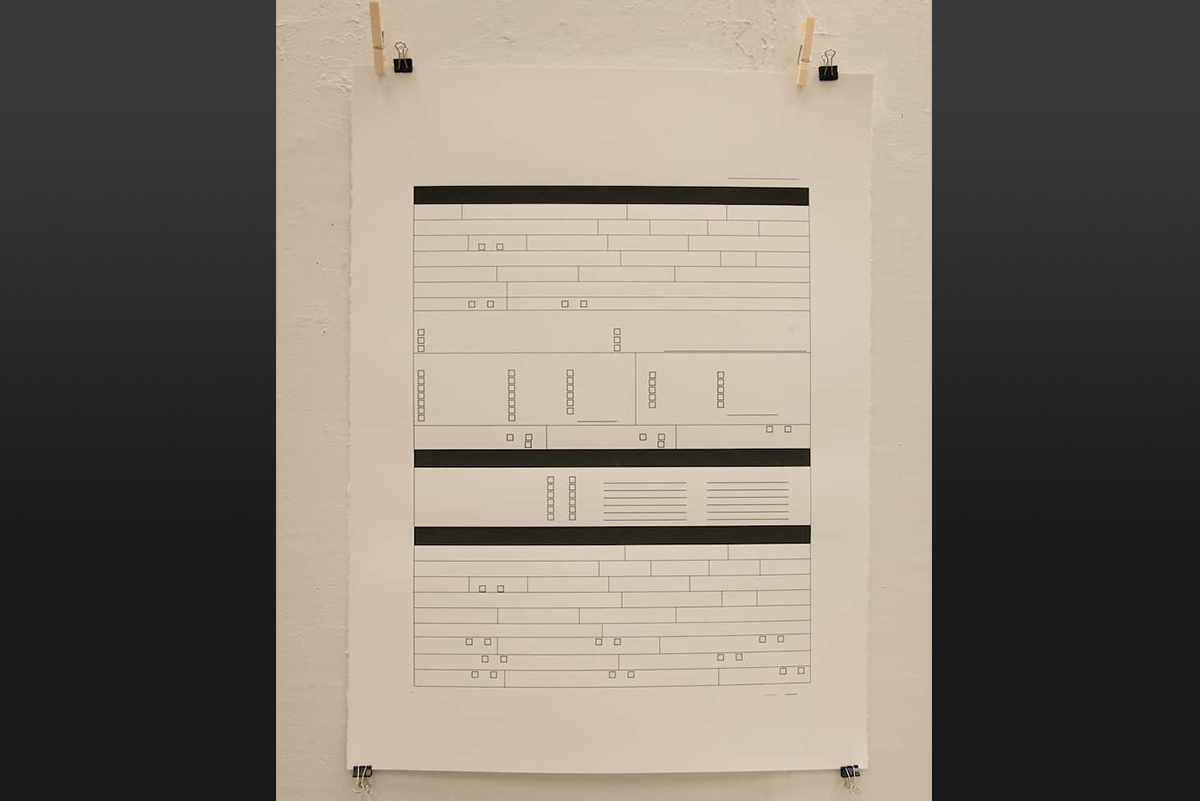
This is a sexual-assault report form with its text removed. Griego says this enlarged template represents the humanless quality of how sexual assault is often perceived: “It becomes empty. Sterile. Clinical.”
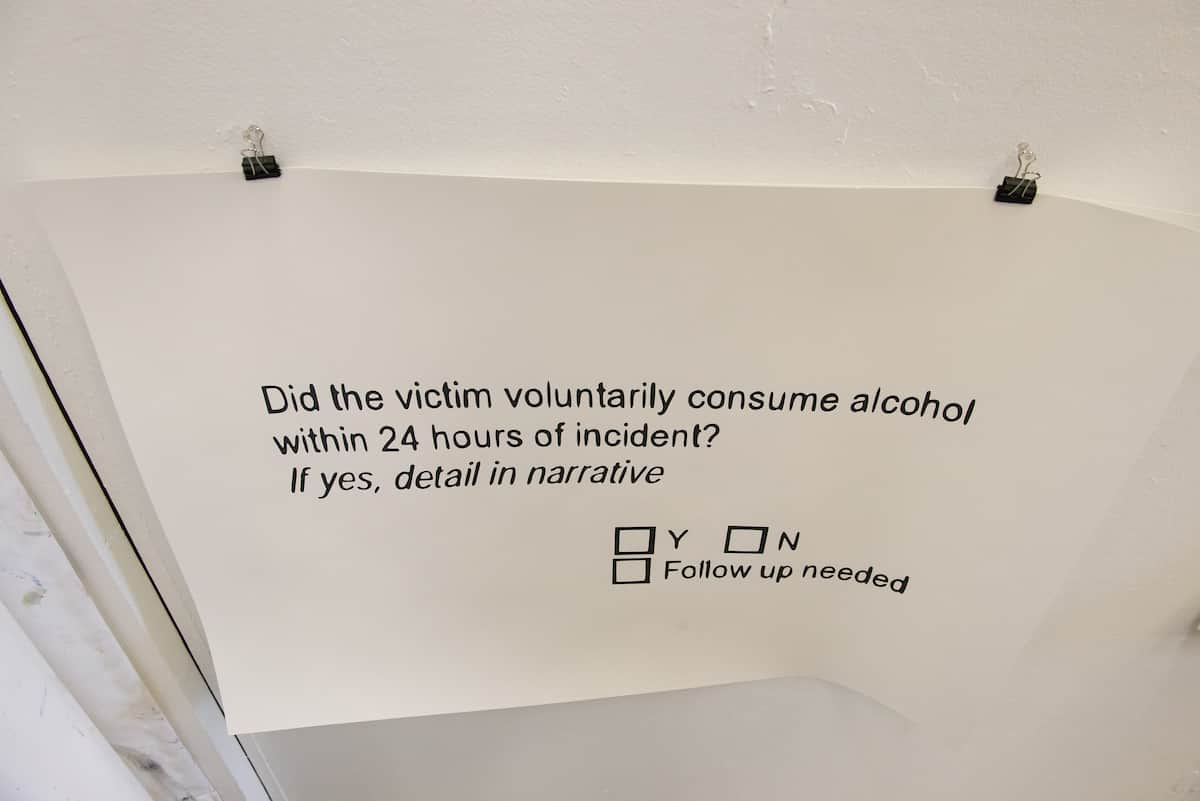
When asked about the amount of research required to find the material for the series, Griego offers an unsettling reply: “I’m very sad that I was able to find the images I was thinking of using for this. It was too easy.”
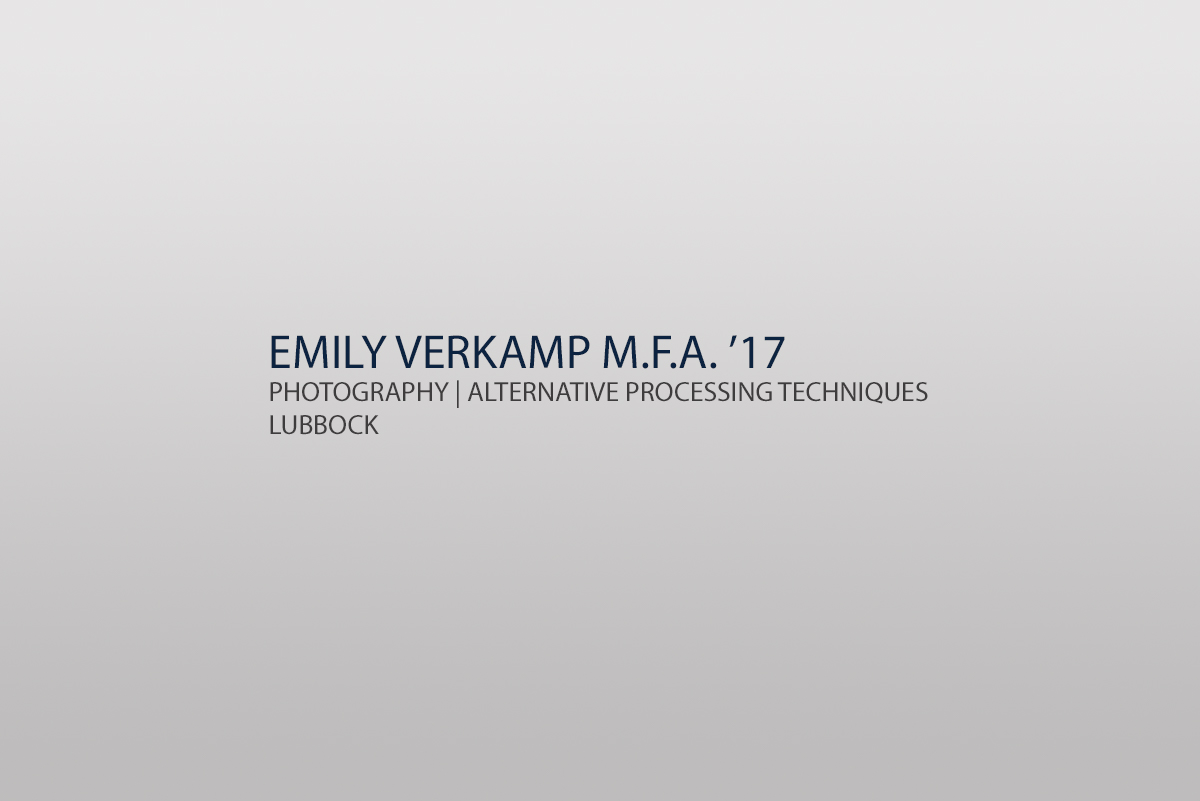
Emily Verkamp M.F.A. ’17
Photography | Alternative Processing Techniques
Lubbock
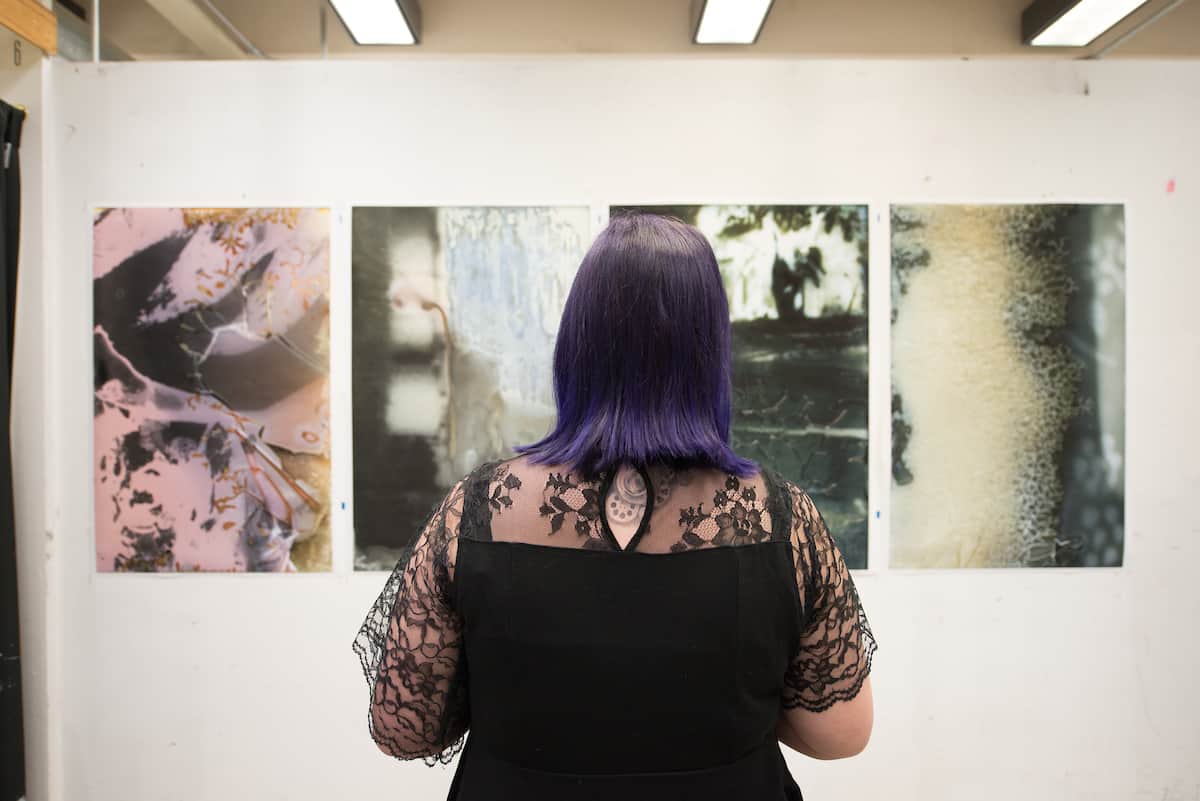
Emily Verkamp was translating photographs to glass plates one day when she made a mistake. That accident turned out to be a revelation. Her use of emulsion and chemical processes gave the photos a cracked, decaying composition.
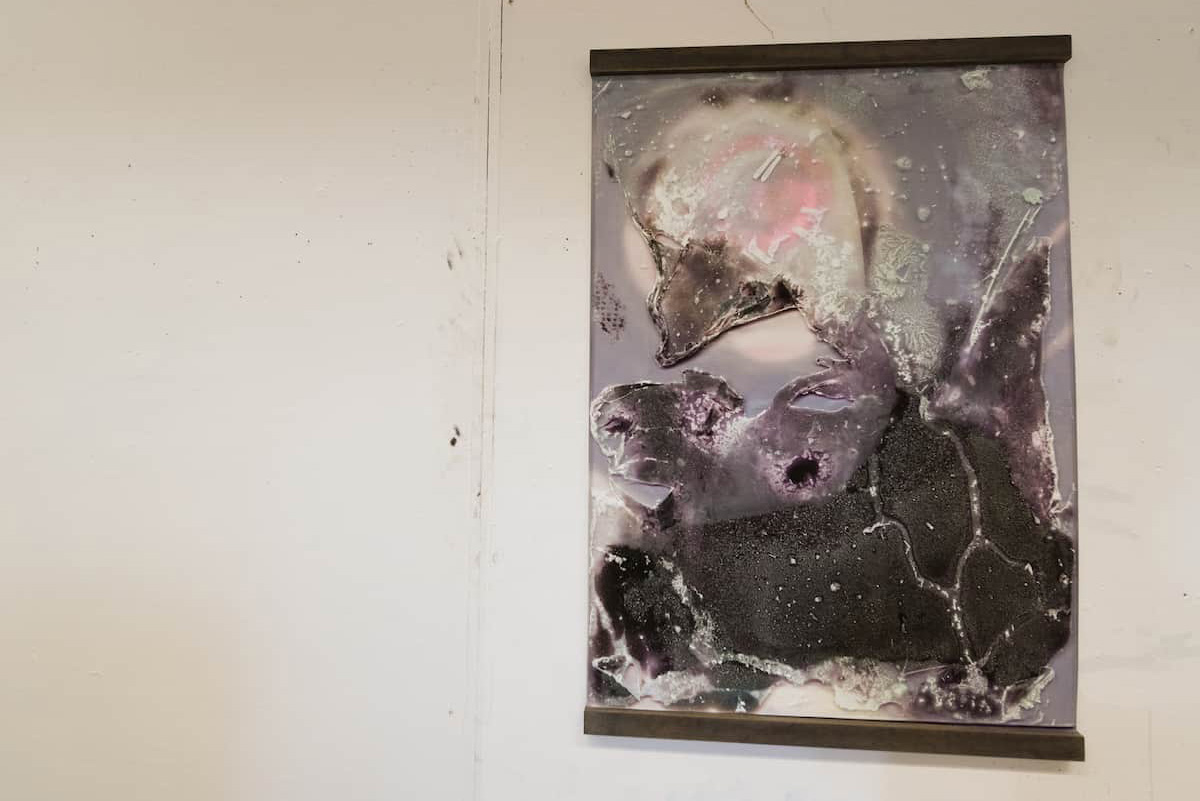
Having studied mordançage and other alternative photographic processes during her undergraduate years at Texas Tech, Verkamp knew she’d stumbled upon something unique. “That’s why I didn’t completely dismiss these messed-up images when I did this in the dark room,” she explains. “I embraced them.”
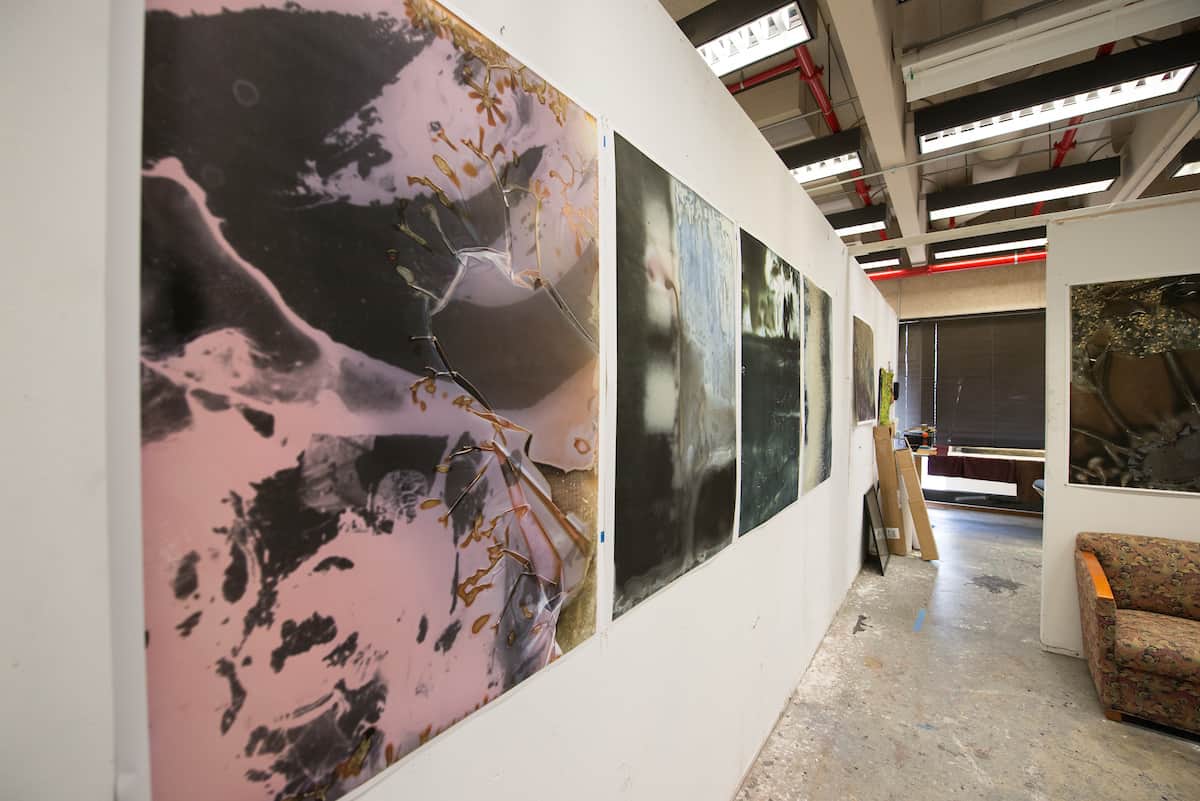
These striking abstract images comrpise an exhibition titled Through the Veil, which has been displayed at UTSA’s Visual Resource Center and the Terminal 136 gallery.
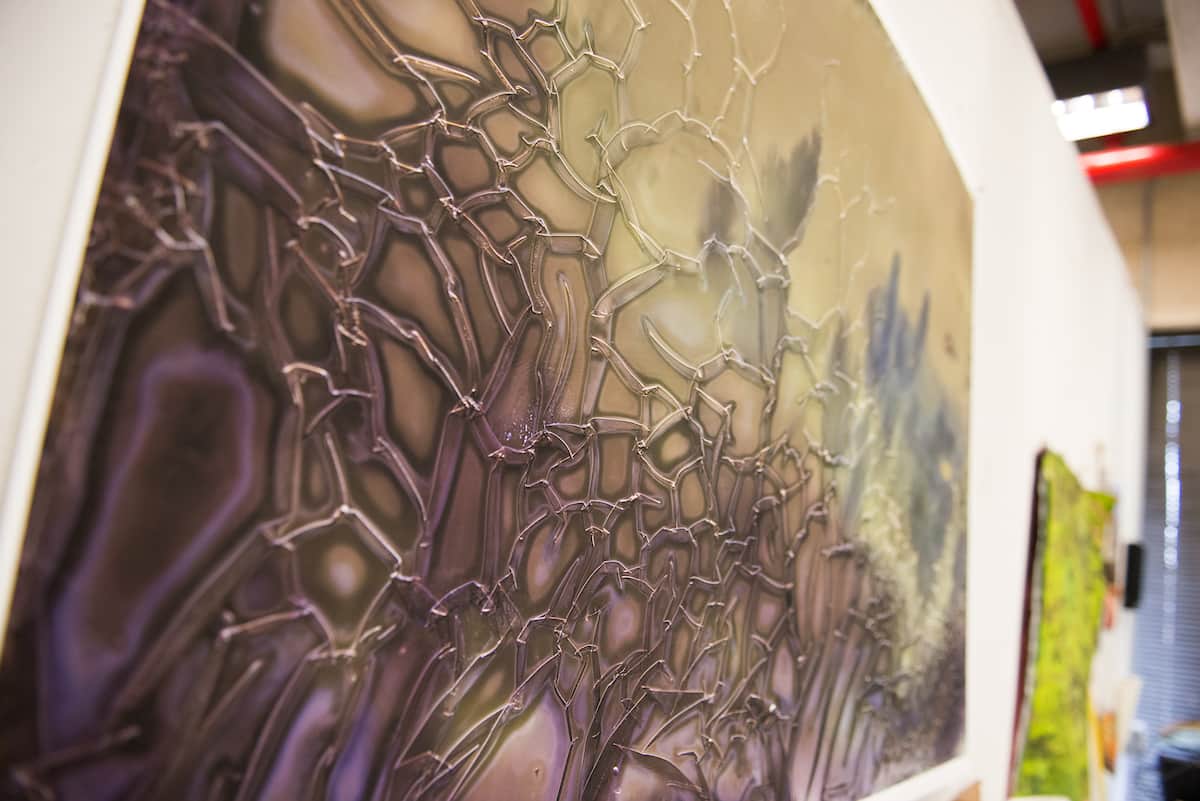
Exhibition viewers have been enamored of the depth of Verkamp’s pieces as they’ve voiced their interpretations. She says, “People say they see fire and blood and snow and icicles—a lot of natural textures.”
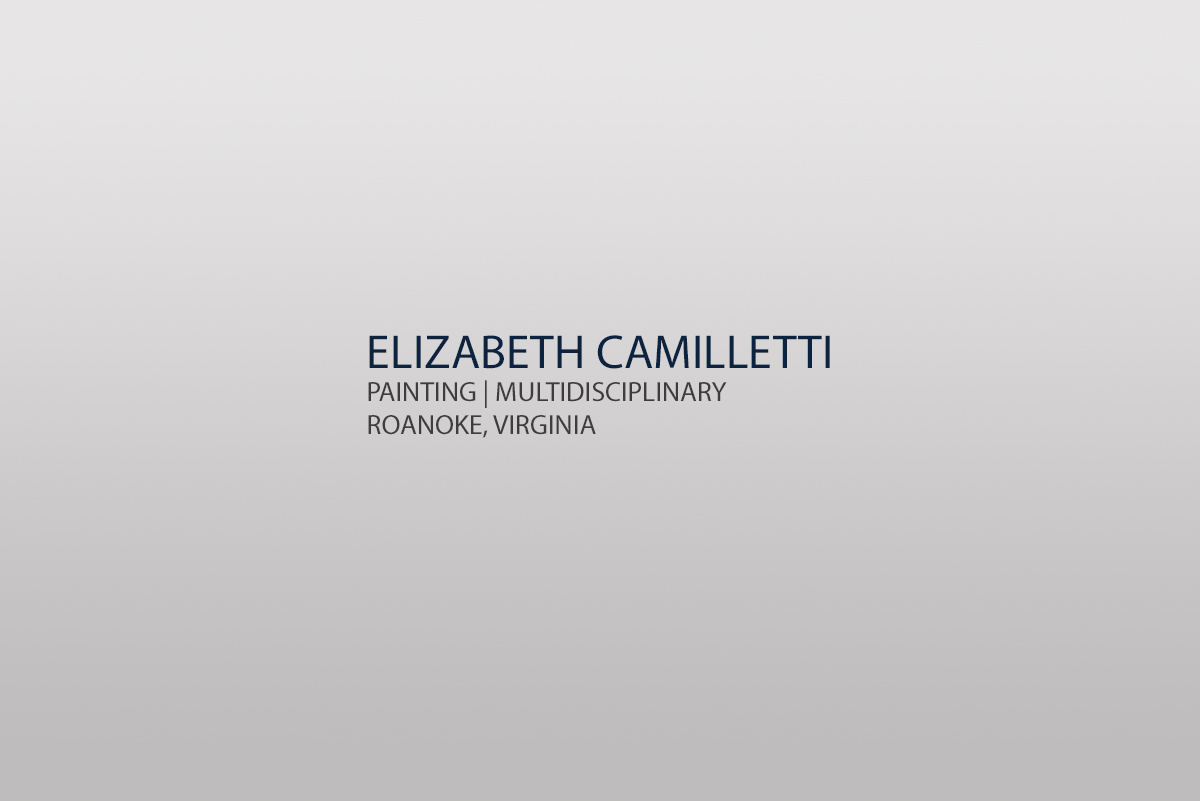
Elizabeth Camilletti
Painting | Multidisciplinary
Roanoke, Virginia
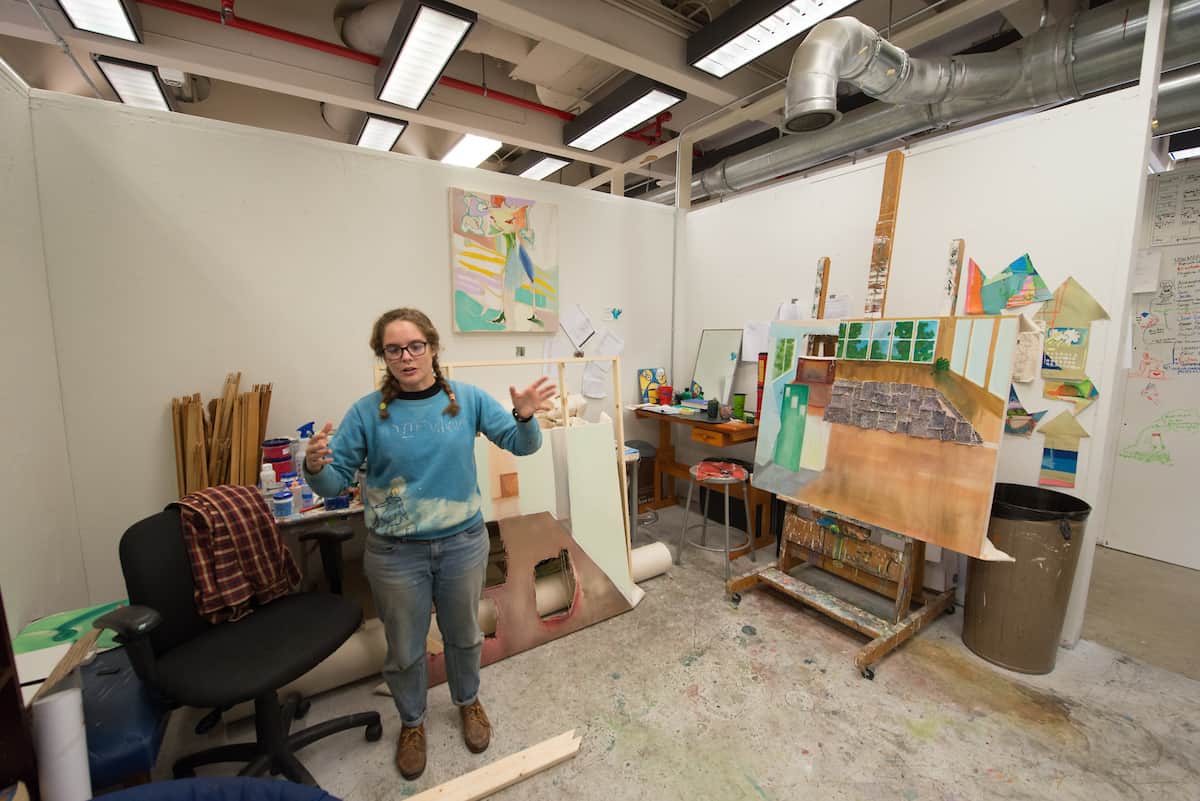
Elizabeth Camilletti is a Virginia native who came to San Antonio for its mix of culture, tradition, and fresh creativity. She was also captivated by the interdisciplinary approach of UTSA’s M.F.A. program, which she says is less rigid than the East Coast grad schools she had toured. “The more I looked at those programs,” Camilletti says, “the less I was interested in the work coming out of them.”
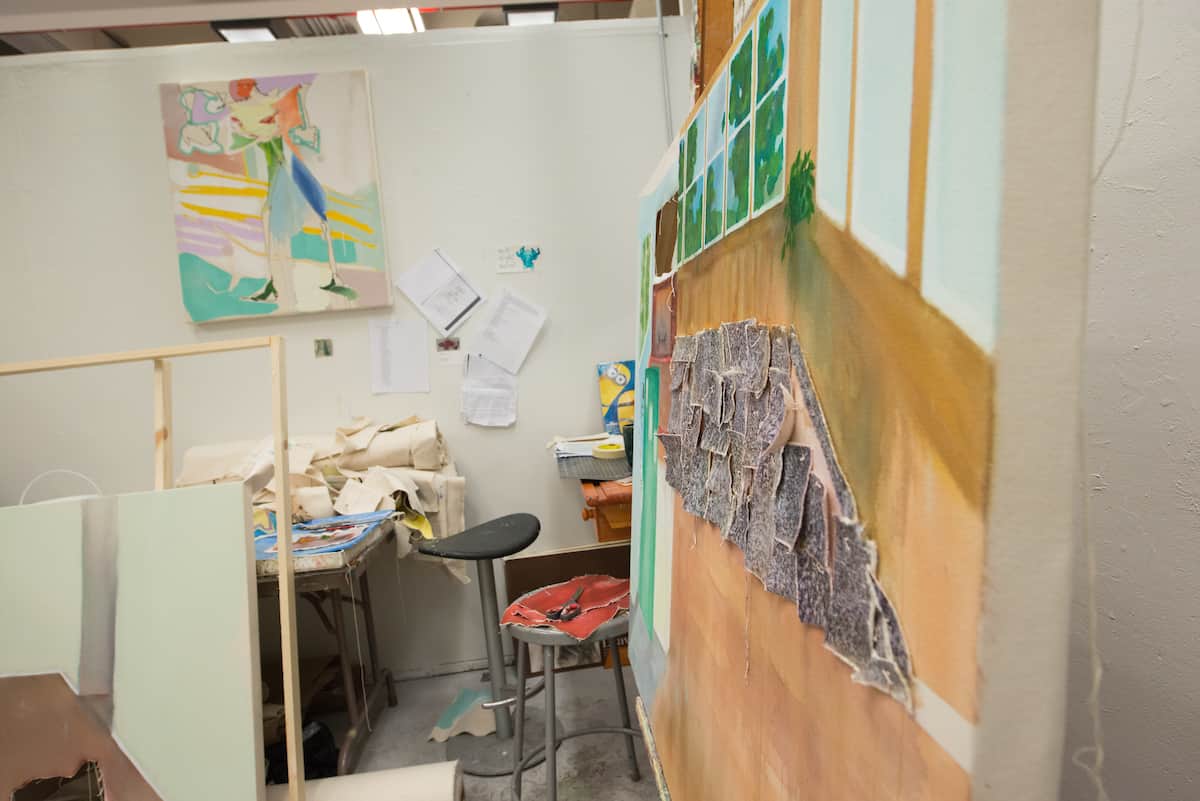
The artwork of her first semester was largely inspired by a series of lectures by Frank Stella, who was disappointed that abstract pieces never gave viewers the opportunity to enter the painting the way Caravaggio’s dramatically illuminated portraits often did. Camilletti took it as a challenge to create abstract pieces that people could “enter” by incorporating ripped canvas layered on corners, windows, and household items.
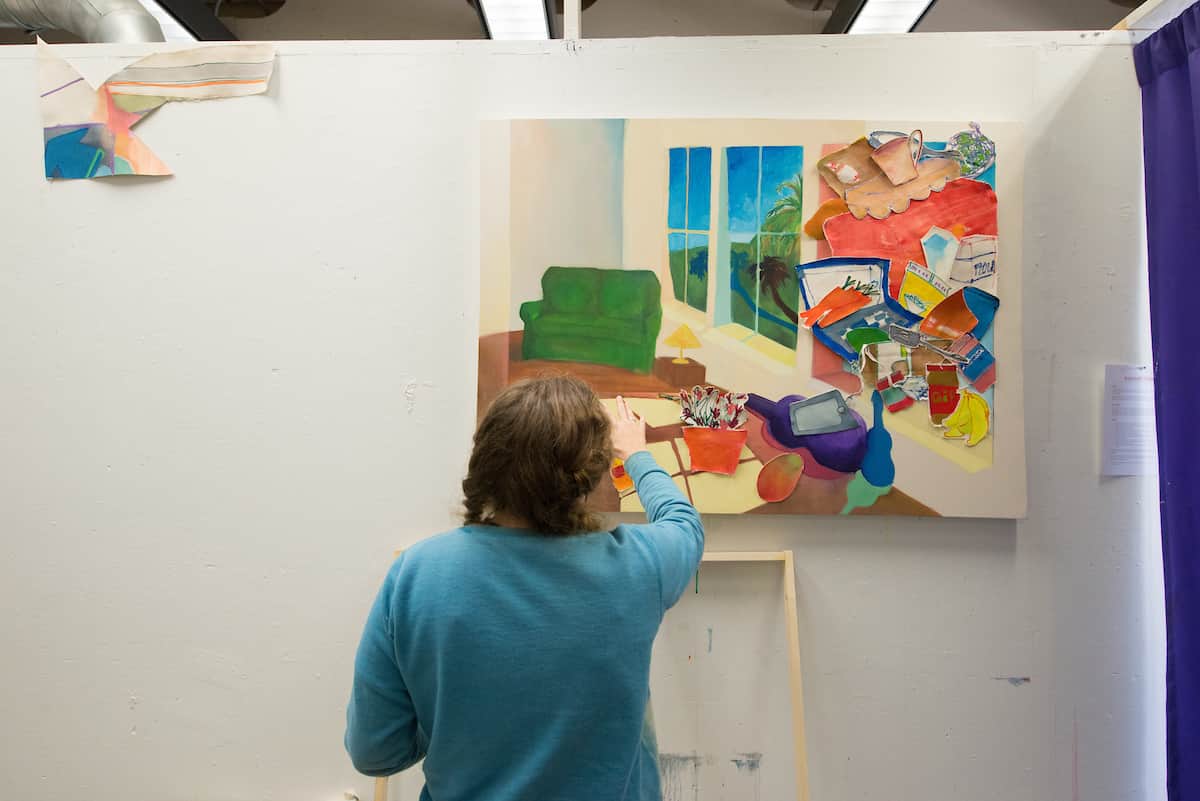
Camilletti is still adjusting to life in San Antonio as well as life as an apartment renter. In this painting she whimsically takes on the splendor and burden of her sofa-front view: palm trees at an outward glance and grocery-list stress from one glimpse at the kitchen. “It’s called The Couch Becomes Less Uncomfortable the More You Look Out the Window,” she says.

Eden Collins
Multidisciplinary | Mixed Media | Performance
West Branch, Michigan
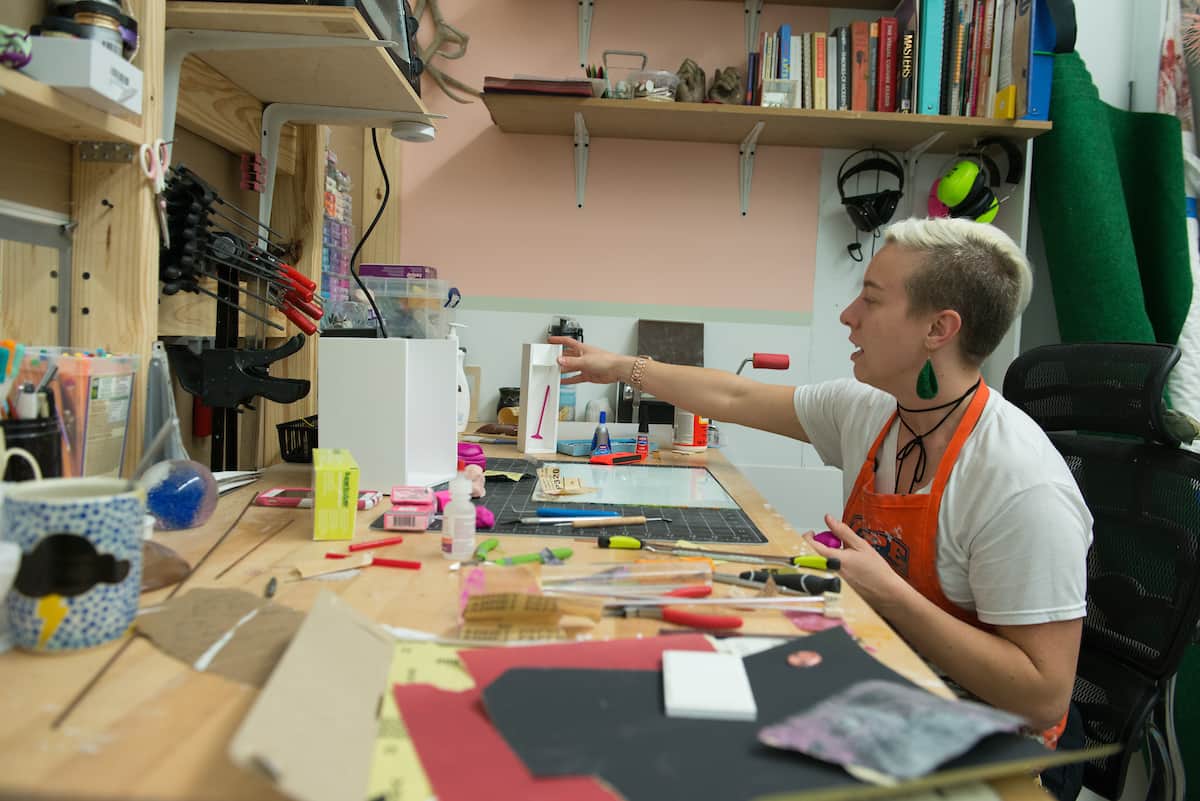
If there’s a guiding force powering the artwork of Eden Collins, it’s that she aims “to always remain in a space of the uncomfortable,” she says. It was no different on this day as she was working on a series of miniature rooms that put household objects used for sexual discovery in the spotlight. “This is totally ‘not safe for work’ stuff,” she says with a big laugh.
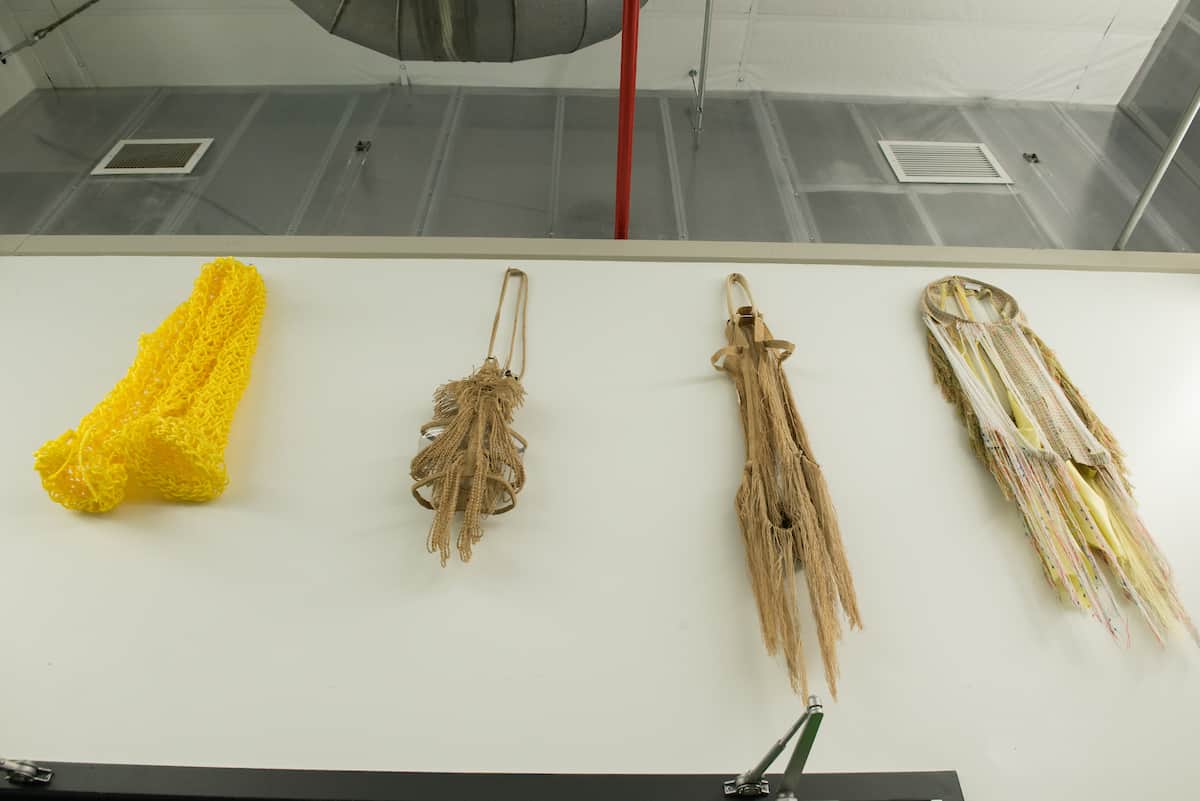
During her undergraduate studies at Hope College in Holland, Mich., and her early years in the M.F.A. program at UTSA, she worked a lot with fabric. These are clothing items and purses that she pulled apart one thread at a time. “I keep finding work that has a certain level of tedium,” she says. “You almost have to lose your mind a little bit to enjoy it.”
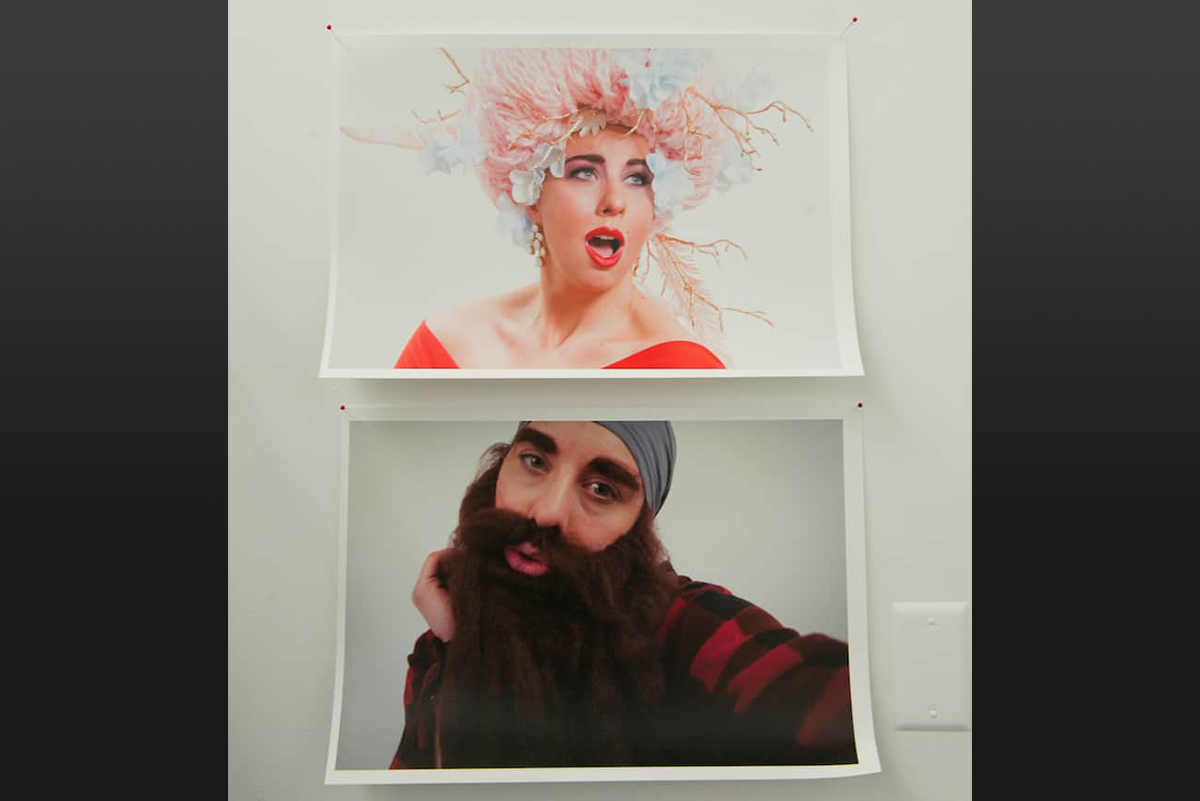
Collins also developed a passion for performance art at UTSA. She’s created several characters, including a “bathtub drag queen” named Anita Finger, Gary the Man, the Opera Singer, Karen the Merkin Saleswoman, and Giraffe the Giraffe (pronounced HER-affe the giraffe).
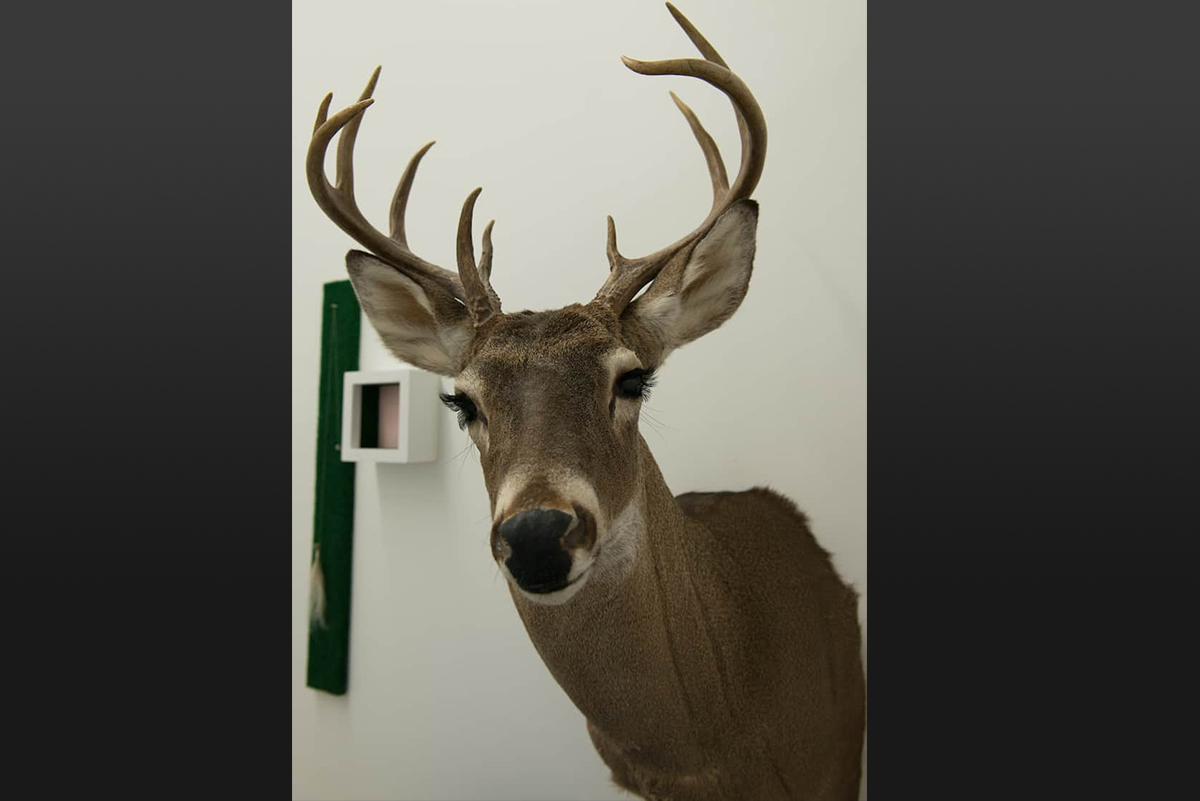
Collins says she’s still figuring out a way to work this “drag stag” into one of her performances.
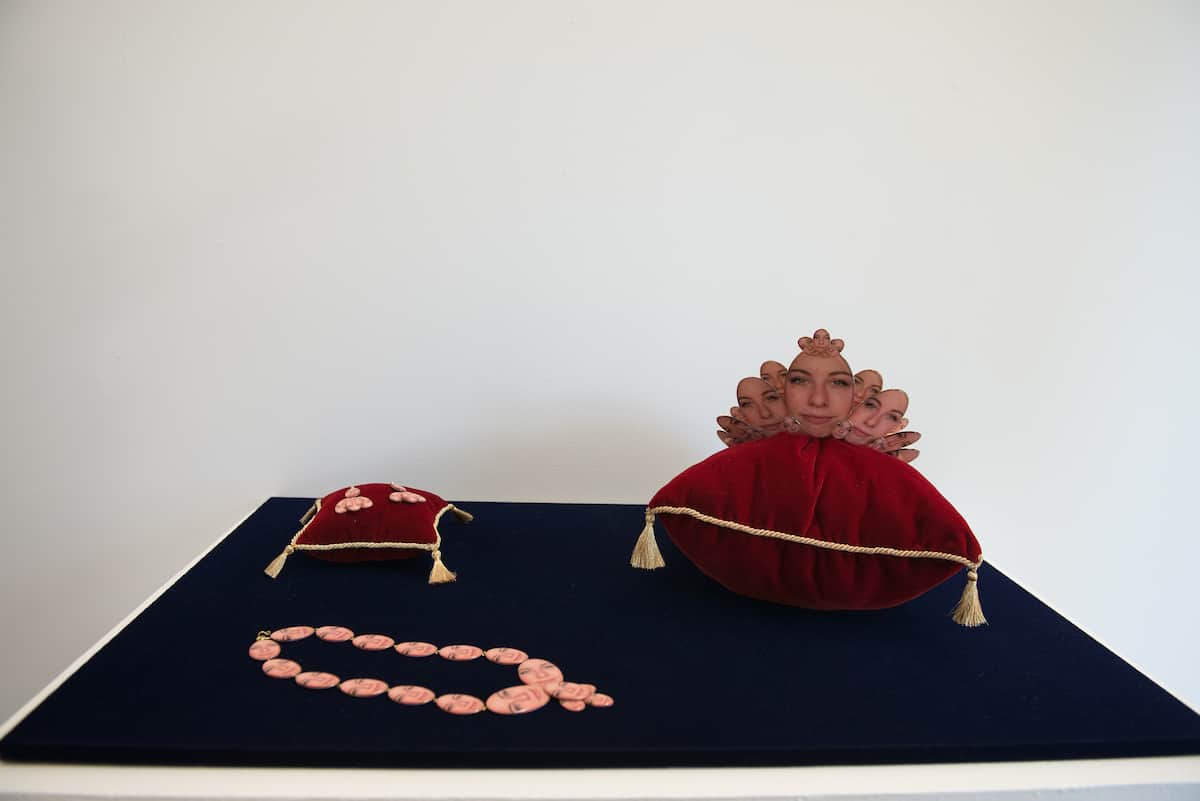
These “royal jewels” sit on a pedestal just outside of her studio. Inspired by a short-lived Snapchat filter that created crowns for people’s faces (and took self-absorption over the top), she created this set of jewelry that swaps priceless stones for cropped photos of her face. She photographed herself wearing them with a full-length gown and a fur coat.
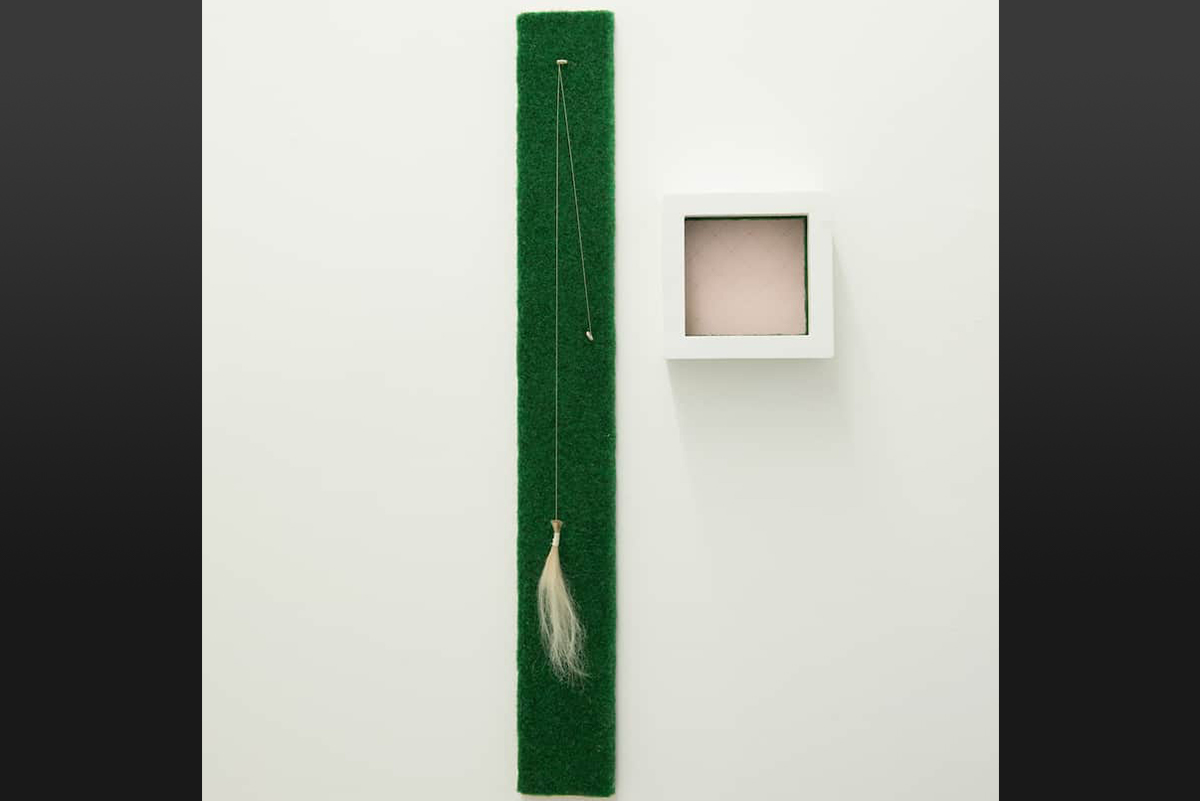
Whether Collins is toying with the gender norms of hair length or riding a big furry bicycle for the Luminaria art festival, people seem to take to her playfulness. She took first place in the 33rd Student Art Exhibition and had a solo exhibition at Hello Studio at Blue Star last year. Her work has been displayed in shows in Minnesota, Michigan, and Maryland as well.
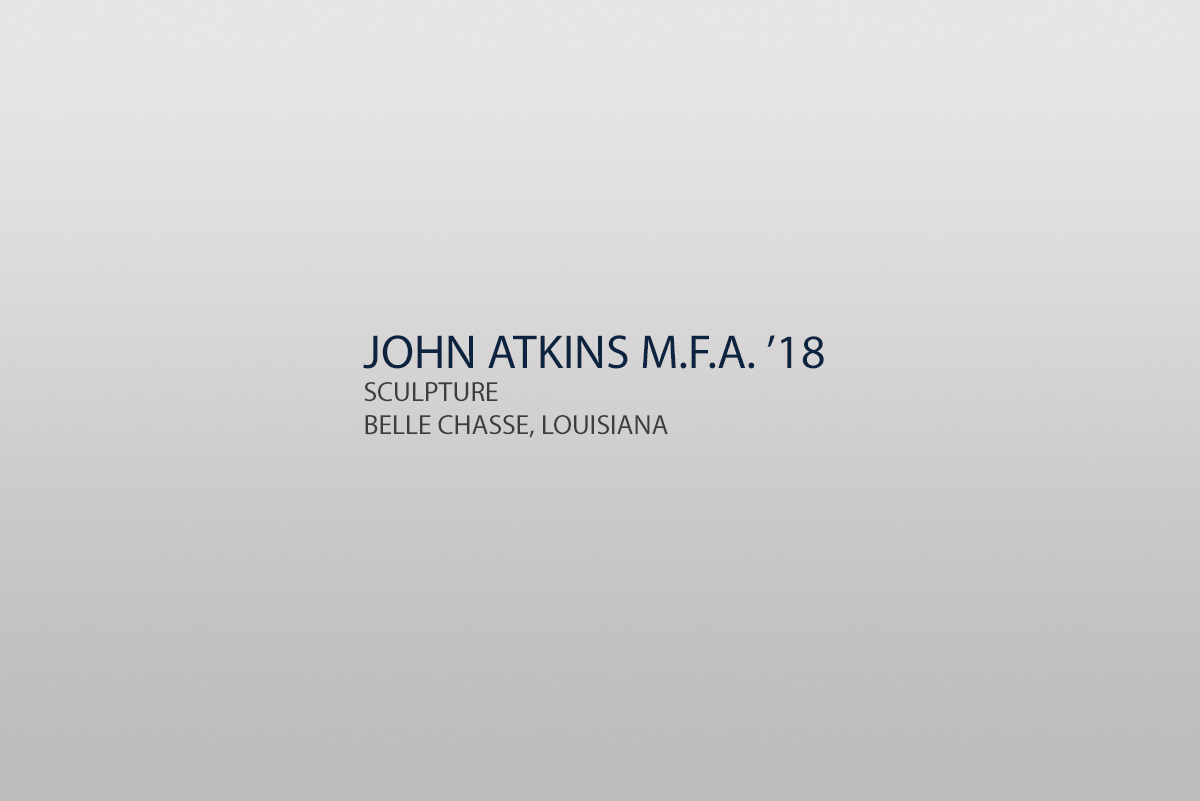
John Atkins M.F.A. ’18
Sculpture
Belle Chasse, Louisiana
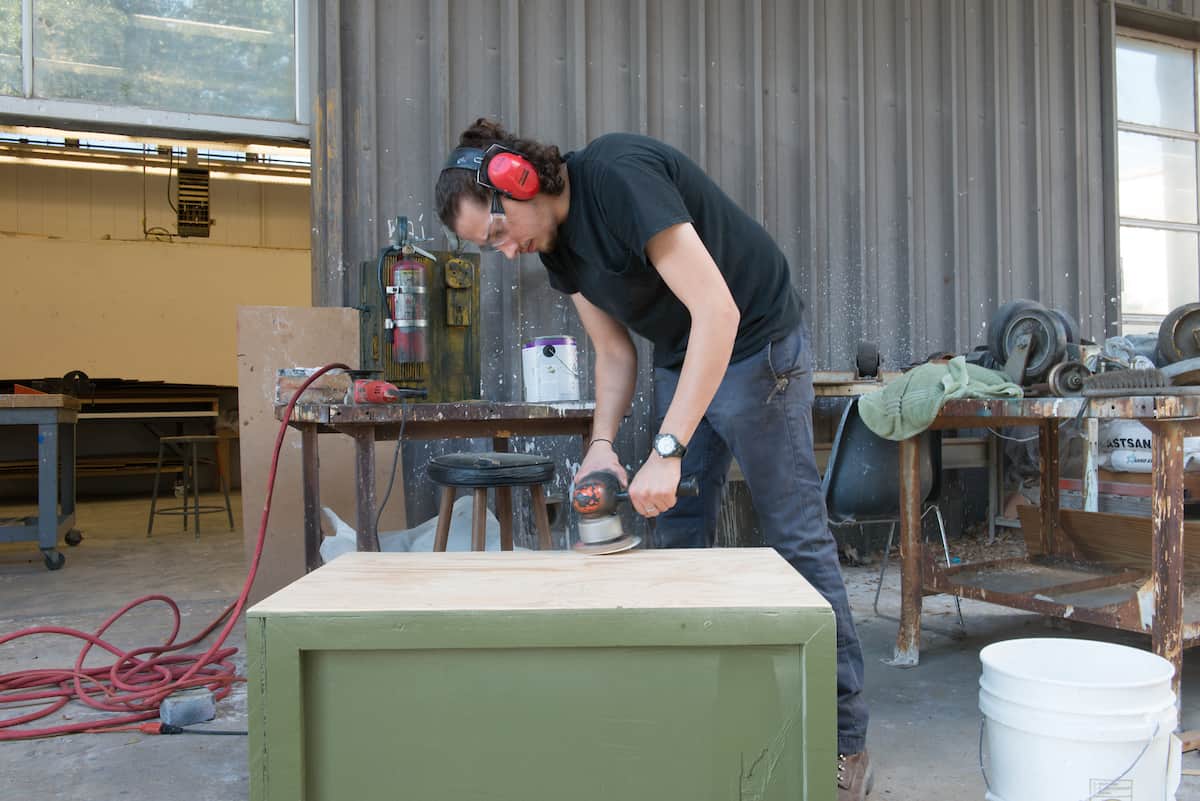
John Atkins keeps his nose to the grindstone. The Louisiana native is constantly juggling multiple projects, and it has paid off. His sculptures have been featured in exhibitions in Houston and San Antonio, and he once sold a dozen kinetic sculptures to the makers of American Horror Story: Freak Show. “I got to hang out and watch Kathy Bates do monologues as a bearded lady!” he recalls about the TV series.
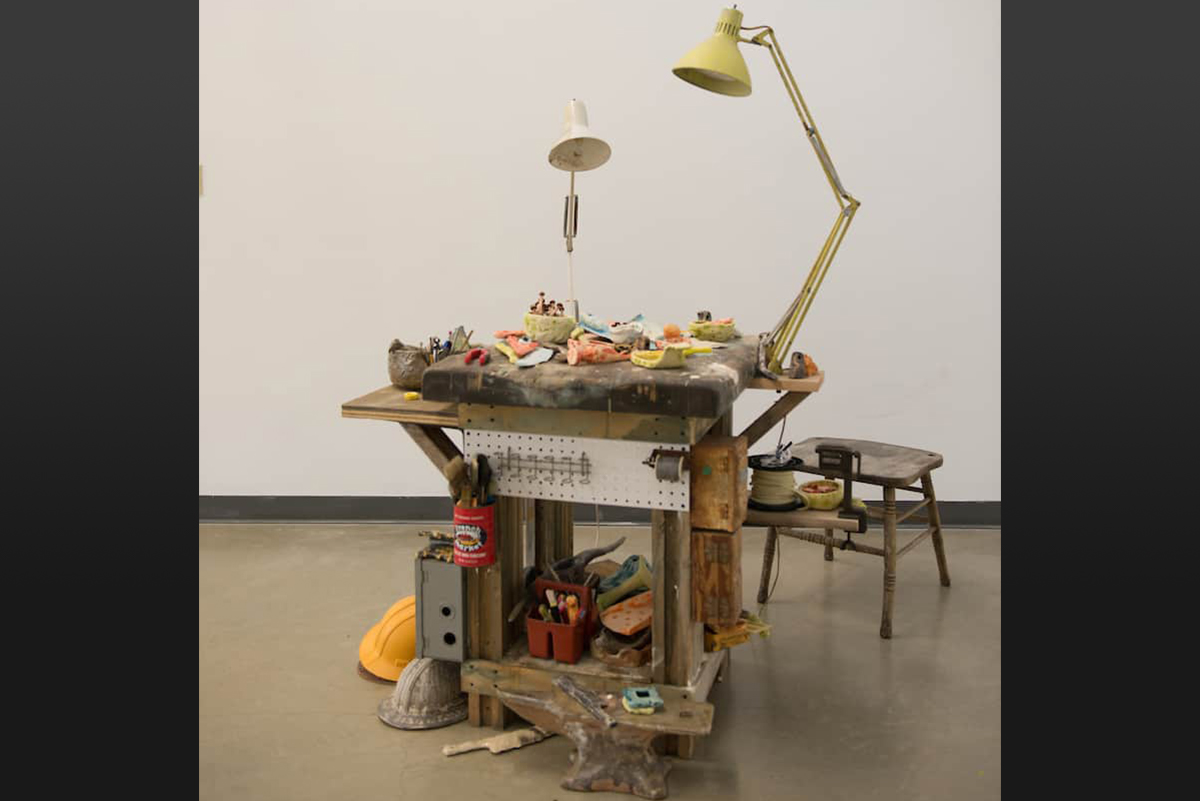
Atkins is fascinated with old objects that have a history, which explains why he hand-weathered two-by-fours, crafted fragile ceramic tools in retro pastel colors, and acquired all sorts of “junky” items to create his messy workbench.
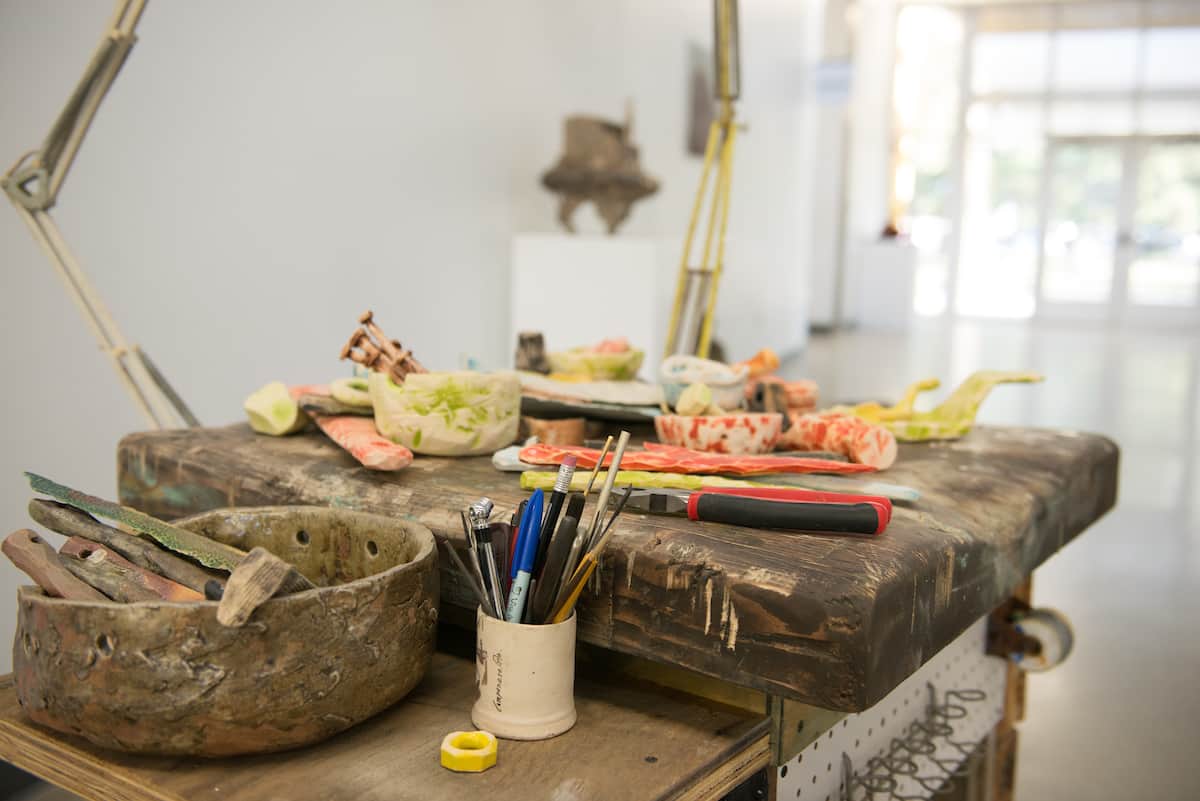
“As long as I’ve been alive, I’ve been around somebody who has a workbench covered in crap,” he says. “Some of it’s in jars. Some of it’s in buckets. There are tools that should be hanging up, but only three of them are. The workbench is useful, but it’s also hindered by its own usefulness.”
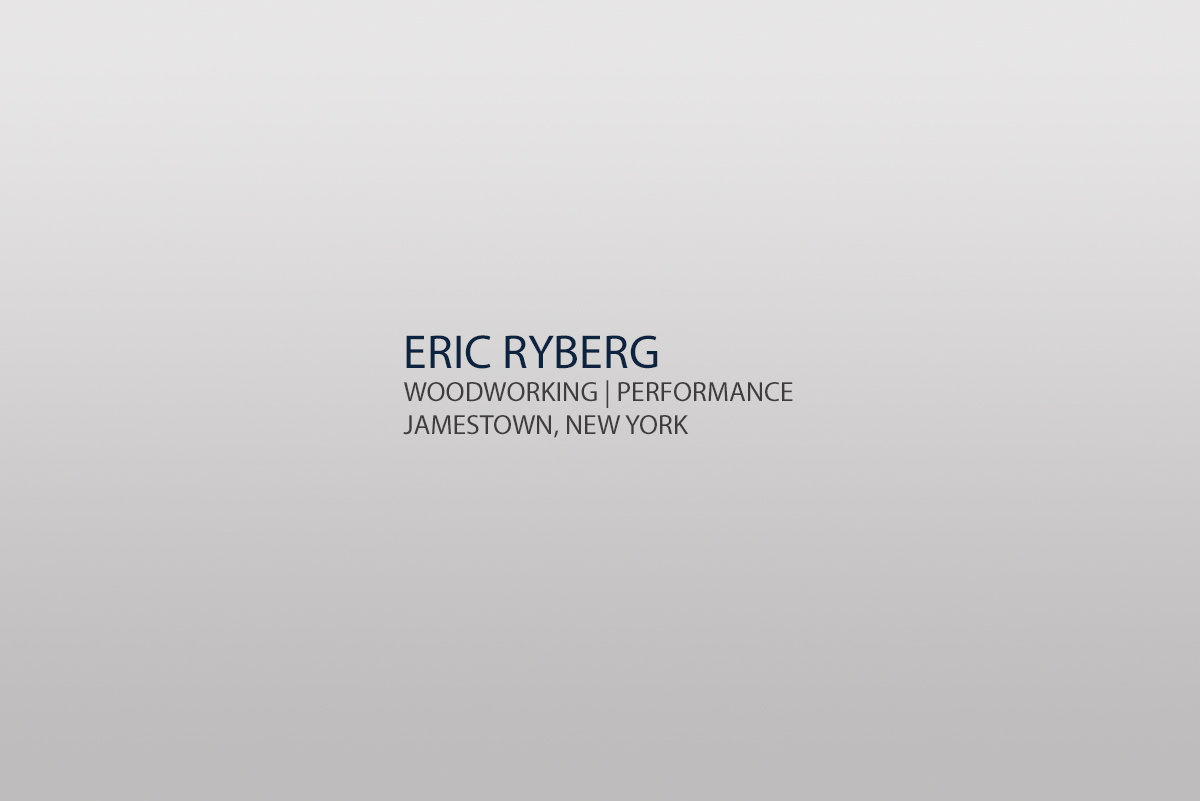
Eric Ryberg
Woodworking | Performance
Jamestown, New York
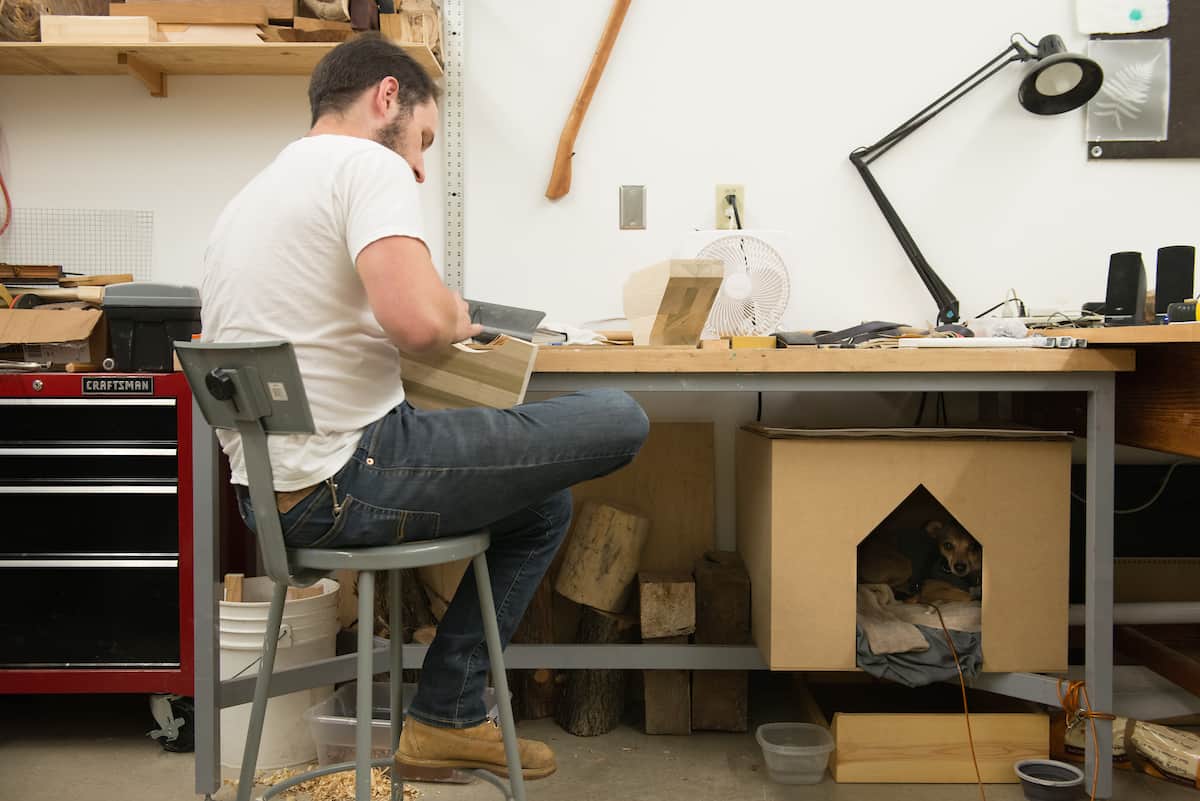
Eric Ryberg was an undergraduate student at the State University of New York at Fredonia, a small campus southwest of Buffalo near Lake Erie. “It’s as far from the city as you can get,” he explains. He started as a painting major, but his interests shifted to 3D art and sculpting. “Using my hands to make something more physical than representational,” he says, “was more enjoyable.”
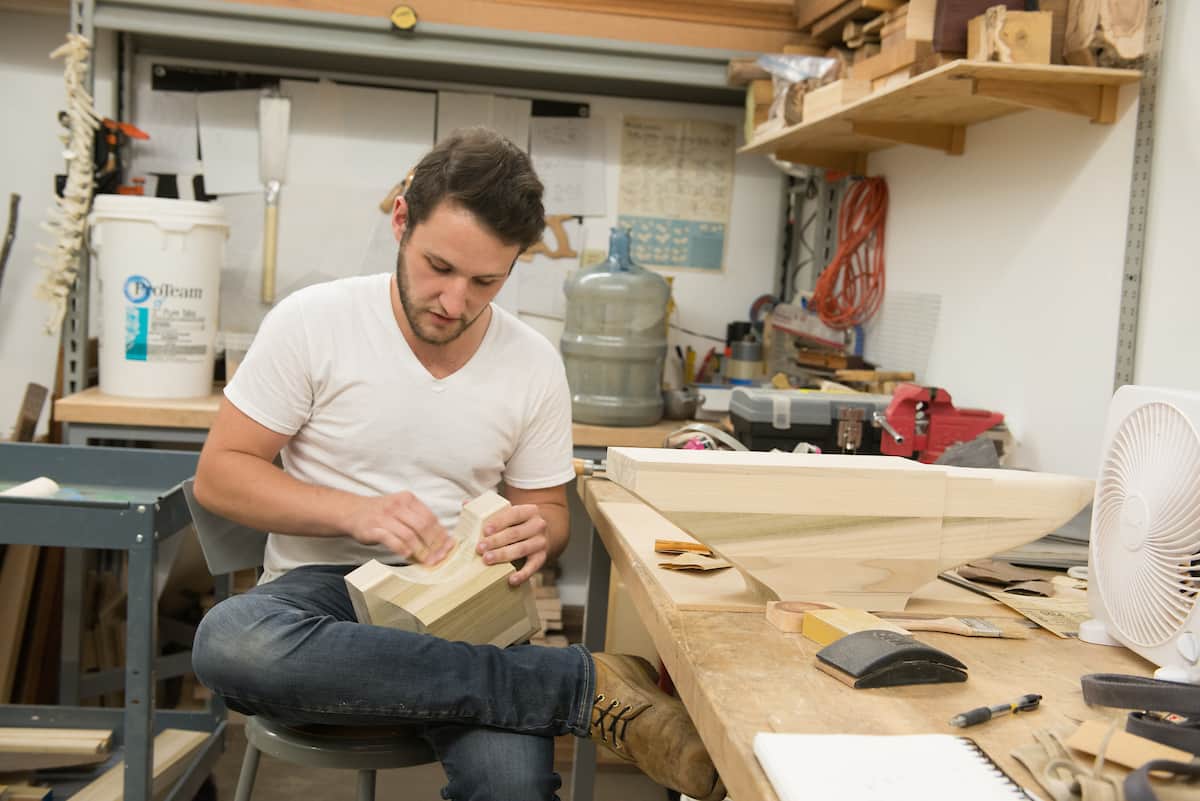
Ryberg has taken to woodworking in his first year in the graduate program at UTSA. He says it’s a craft that his grandfather was passionate about, and his appreciation for carpentry tools rubbed off on him. “He was the type that thought of the tools as gold,” he says. “You don’t mess with them. You don’t touch them.”
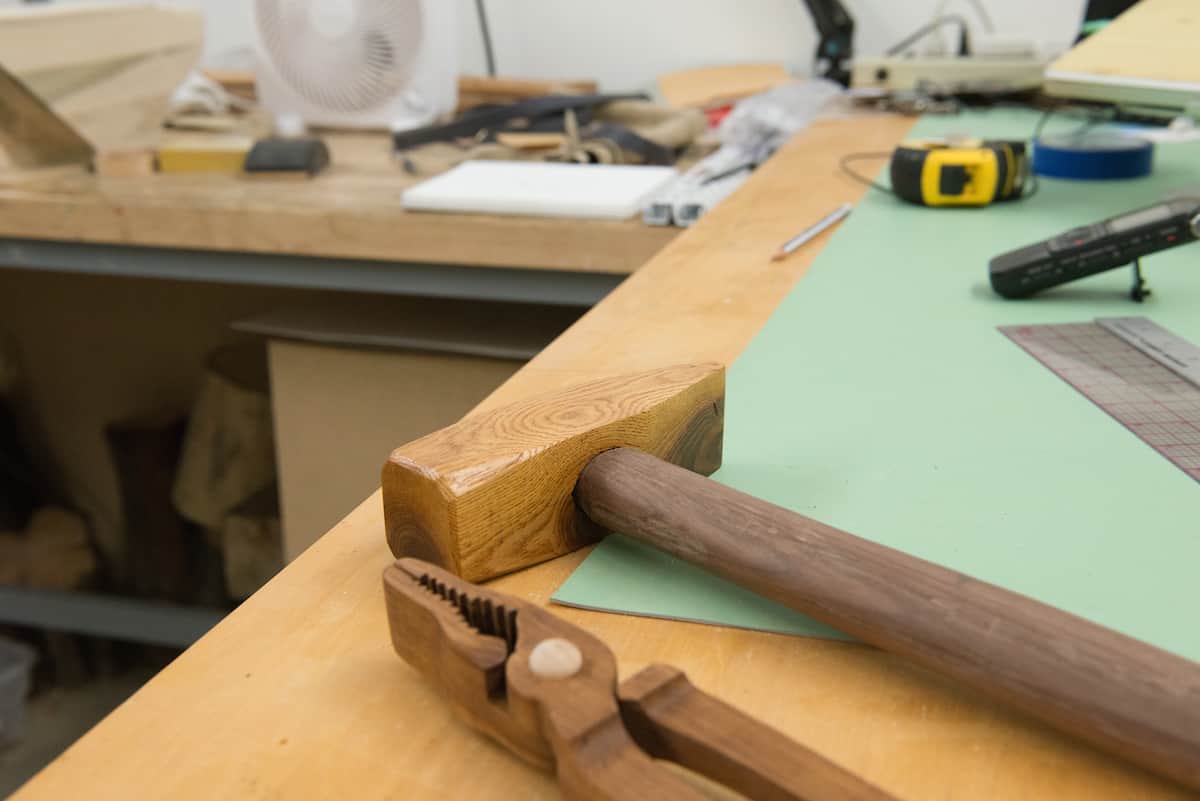
Having such an appreciation for those tools has been both a blessing and a burden as an artist. Through his work—crafting axes, anvils, and forging hammers from wood—Ryberg urges viewers to think more about their form than their function. There was just one problem: He admired them too much. “I couldn’t get past making them look nice,” he says.
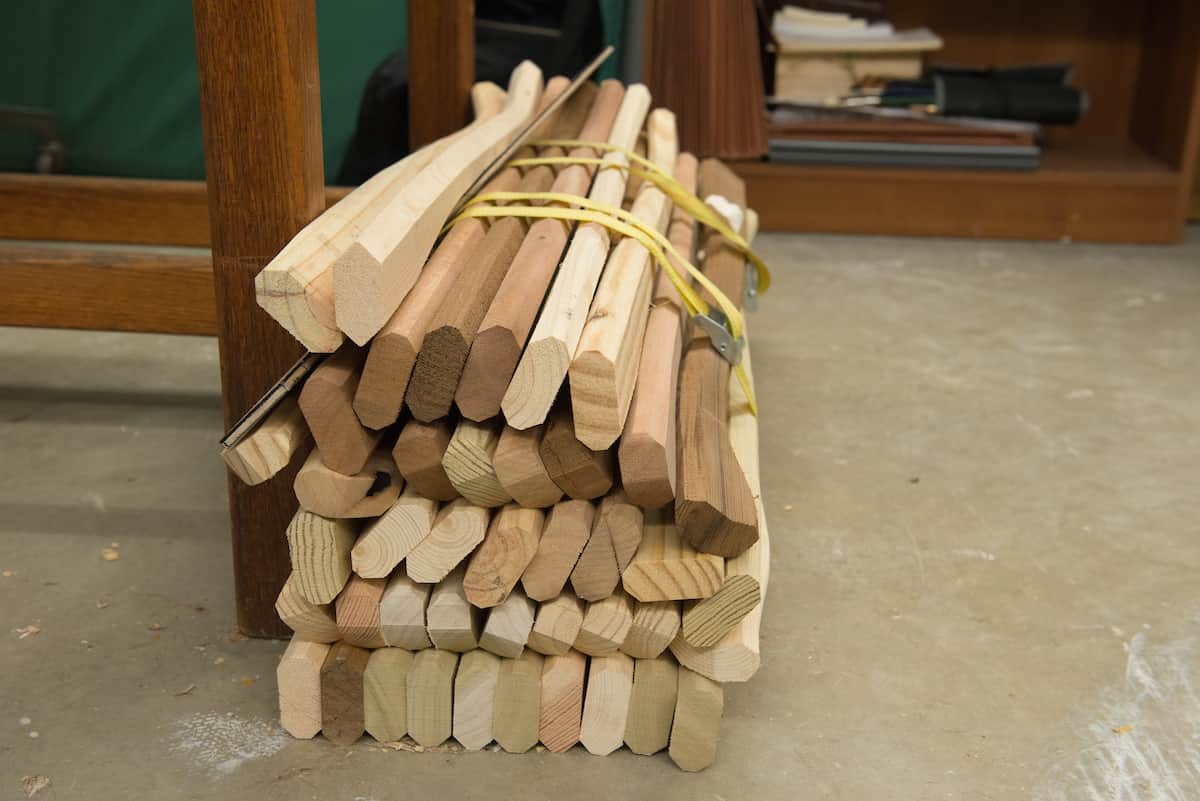
Attempting to break that hold, Ryberg will annihilate the wooden tools he’s created in a performance. He plans to destroy 50 wooden axes while chopping a log with them. The pile of broken axes and axe handles will be presented as the final piece. “It’s going to be very freeing for me to get away from being so protective of my work,” he admits.
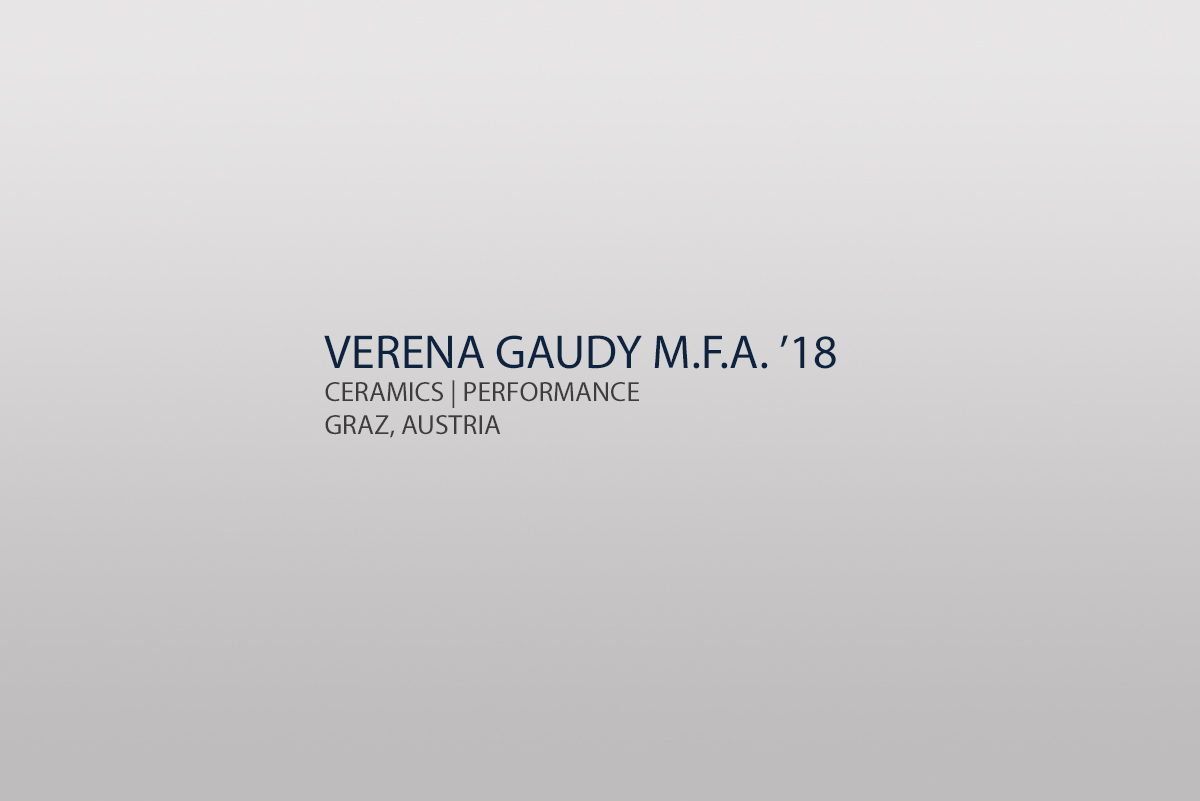
Verena Gaudy M.F.A. ’18
Ceramics | Performance
Graz, Austria
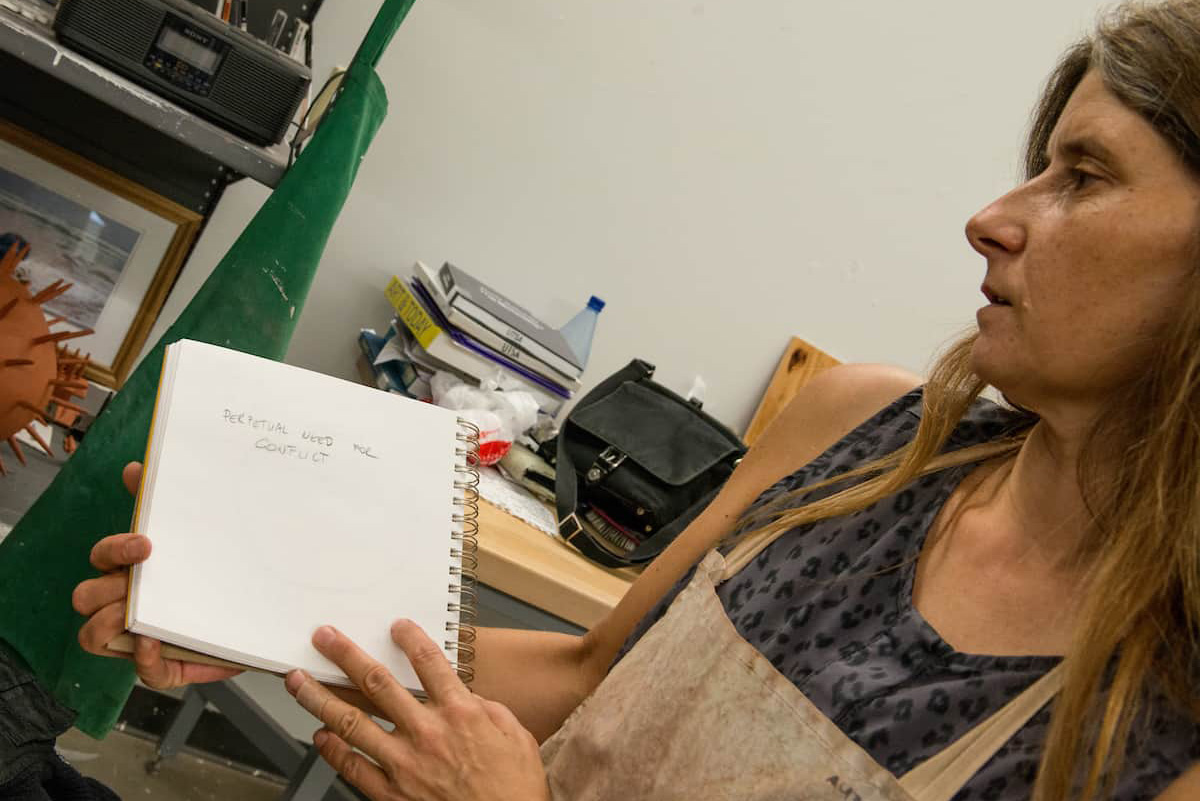
Born and raised in Austria before earning her B.F.A. in Cardiff, Wales, Verena Gaudy was often overwhelmed by the human atrocities committed during war—most notably, her home country’s startling involvement in the Third Reich. Her recent work questions why violence is so firmly rooted in human behavior. The series of ceramics is called Perpetual Need for Conflict.
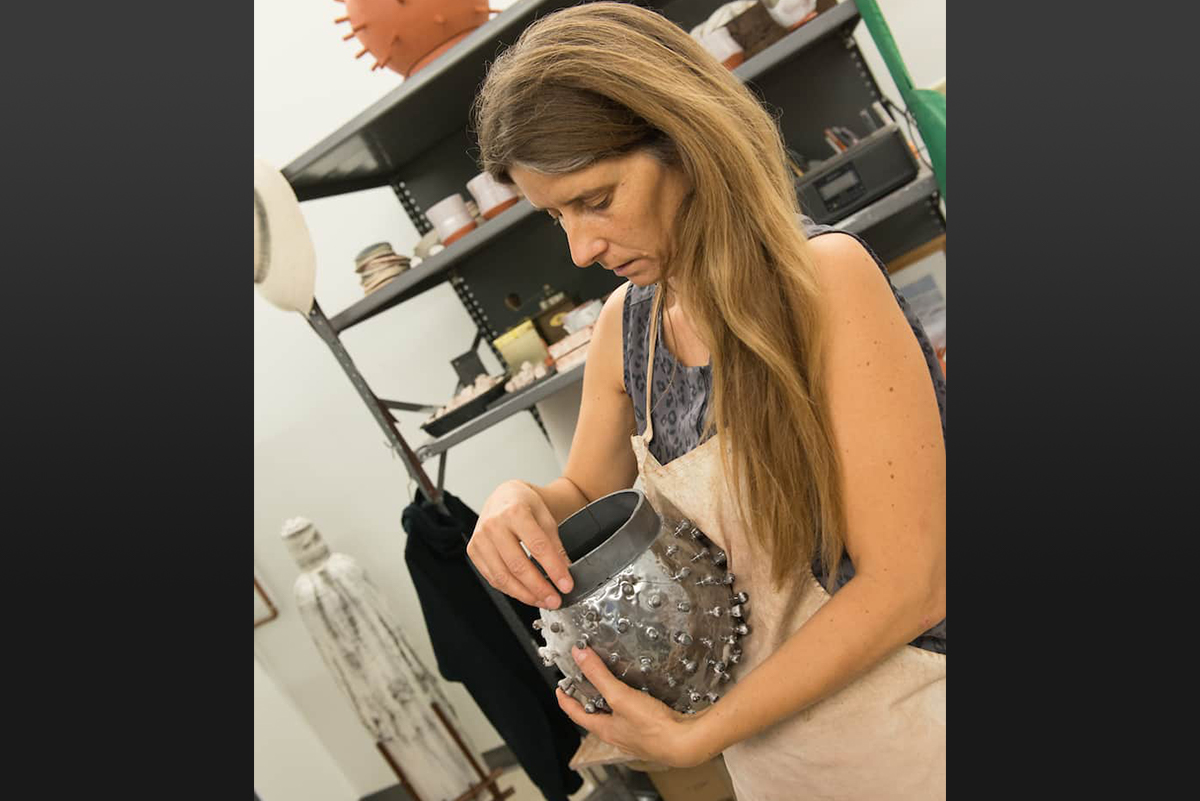
Gaudy crafted 54 unique ceramic “grenades,” which were lined up in nine rows of six in an exhibition at the SAC Visual Arts Center in the fall of 2017. Her M.F.A. thesis exhibition, “Of Bombs and Men,” built on the theme of abstracted battle artifacts as it addressed humankind’s capacity for destruction.
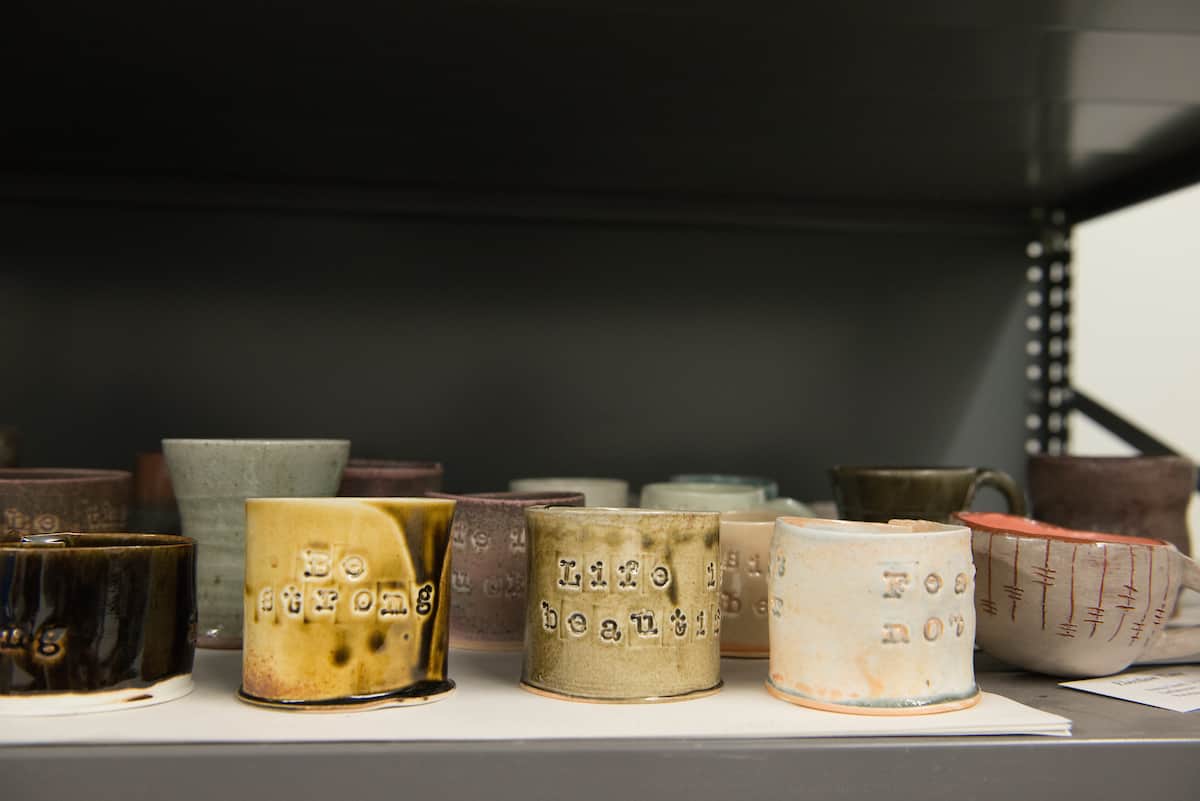
Gaudy has also created a series of porcelain cups and ceramics for war refugees and the people who take them in.
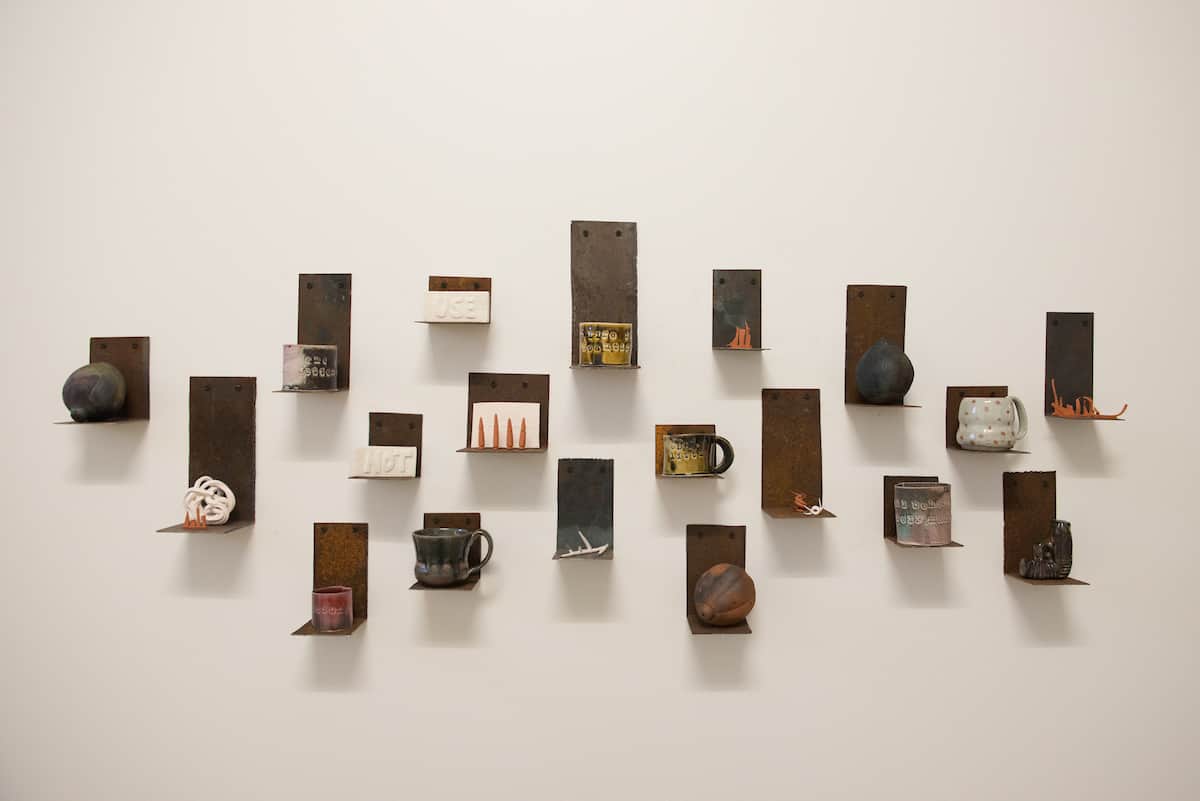
The messages on Gaudy’s ceramic pieces are intended to be motivational, inspirational, and contemplative.
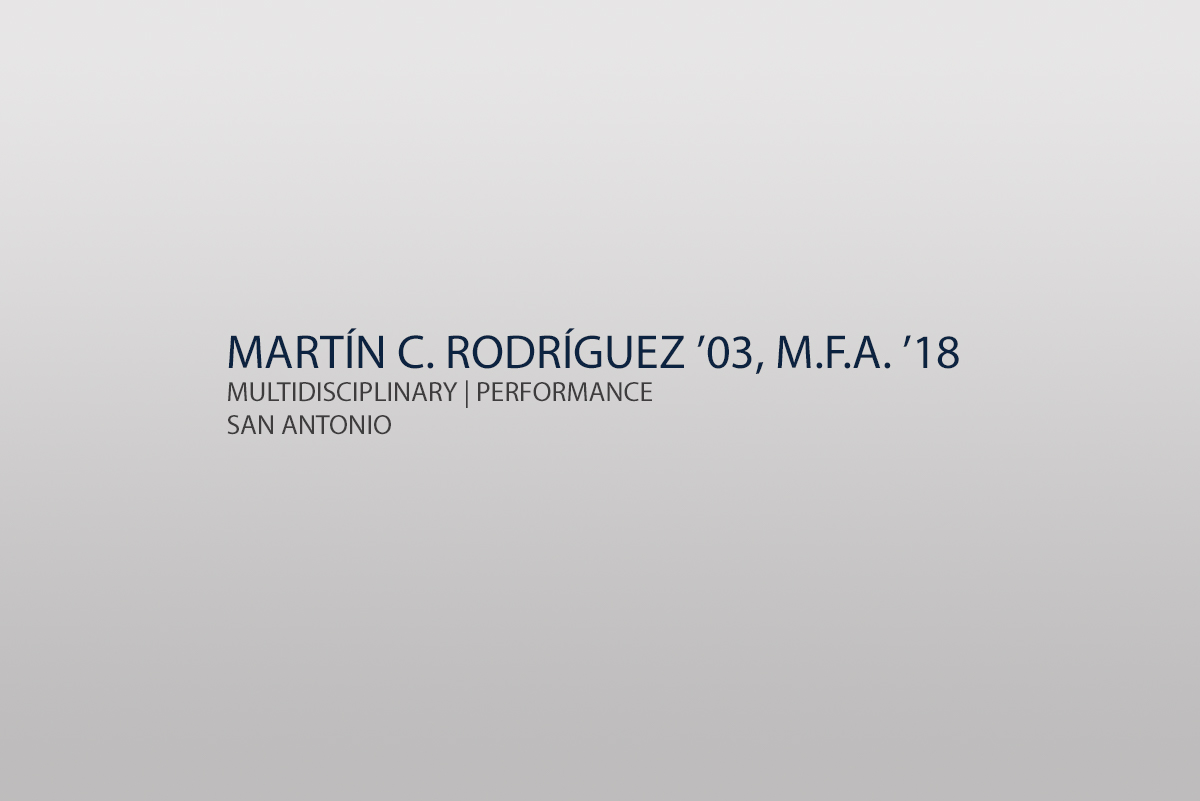
Martín C. Rodríguez ’03, M.F.A. ’18
Multidisciplinary | Performance
San Antonio
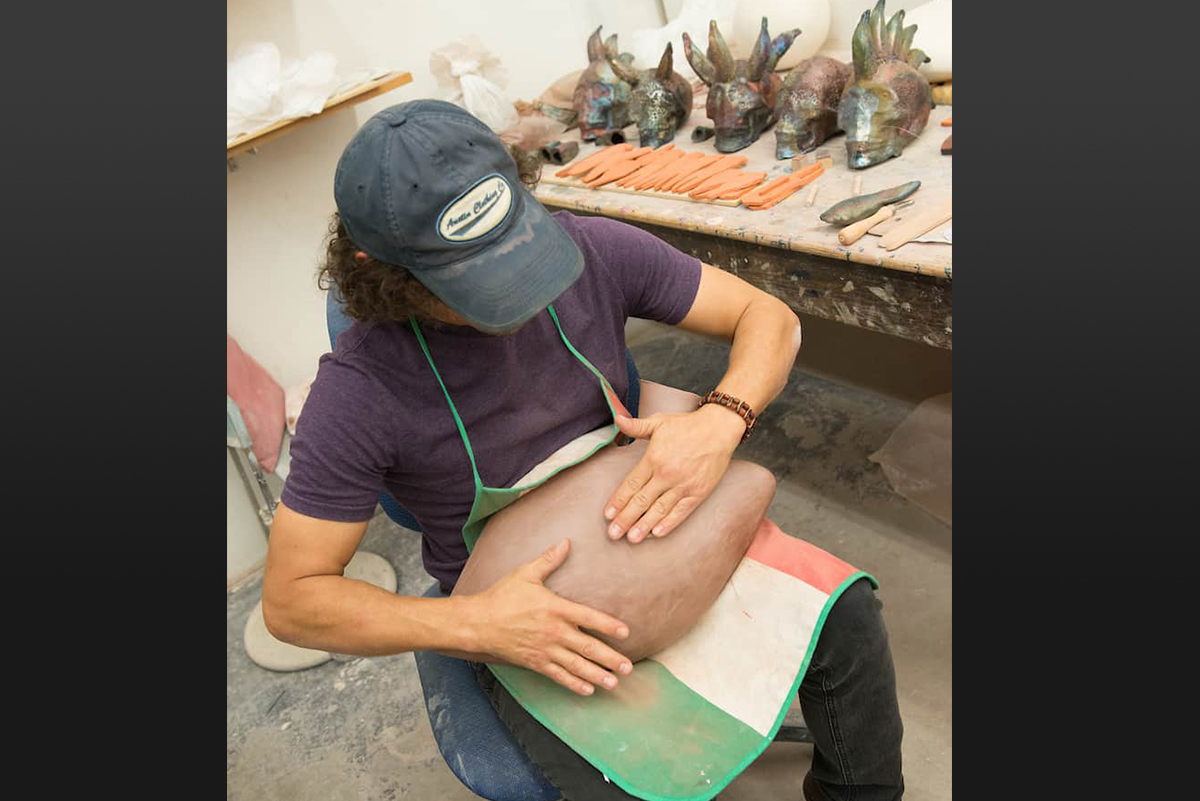
Martín C. Rodríguez, a first-generation mainland Puerto Rican, took a different path than many of his peers in the M.F.A. program. He earned his bachelor’s degree from UTSA in 2003 and then worked in the Office of Information Technology for several years before pursuing his M.F.A. He is a multidisciplinary new media artist whose emphasis is performance art. He frequently collaborates with fellow student Verena Gaudy.
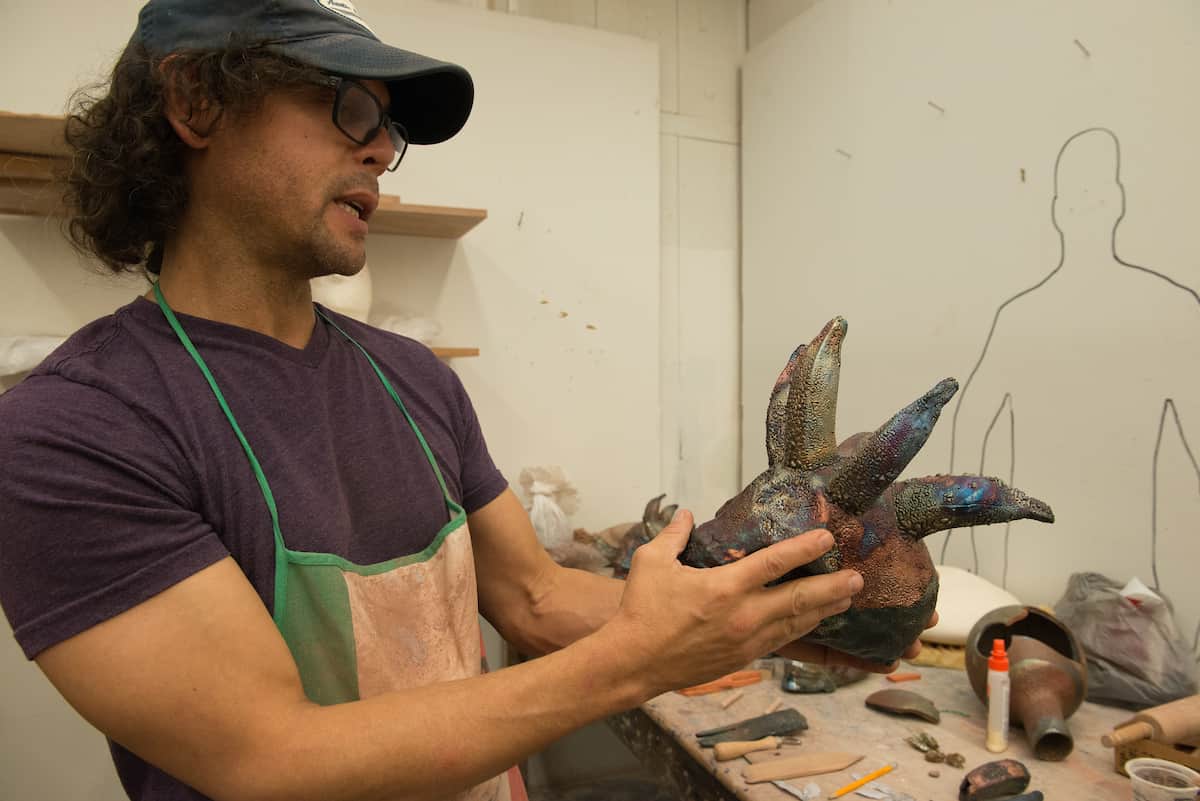
Rodríguez’s artwork often incorporates aspects of Mexican-American, Texan, and Puerto Rican culture with an aim to creatively connect to his heritage. With horns made from plantains, this is one of a handful of Vejigante masks he’s created. These masks are often seen at Puerto Rican celebrations like Carnival and Santiago Apóstol Fiesta. The Vejigante once represented a folkloric demon, but took on a new dimension through African and Caribbean influences.
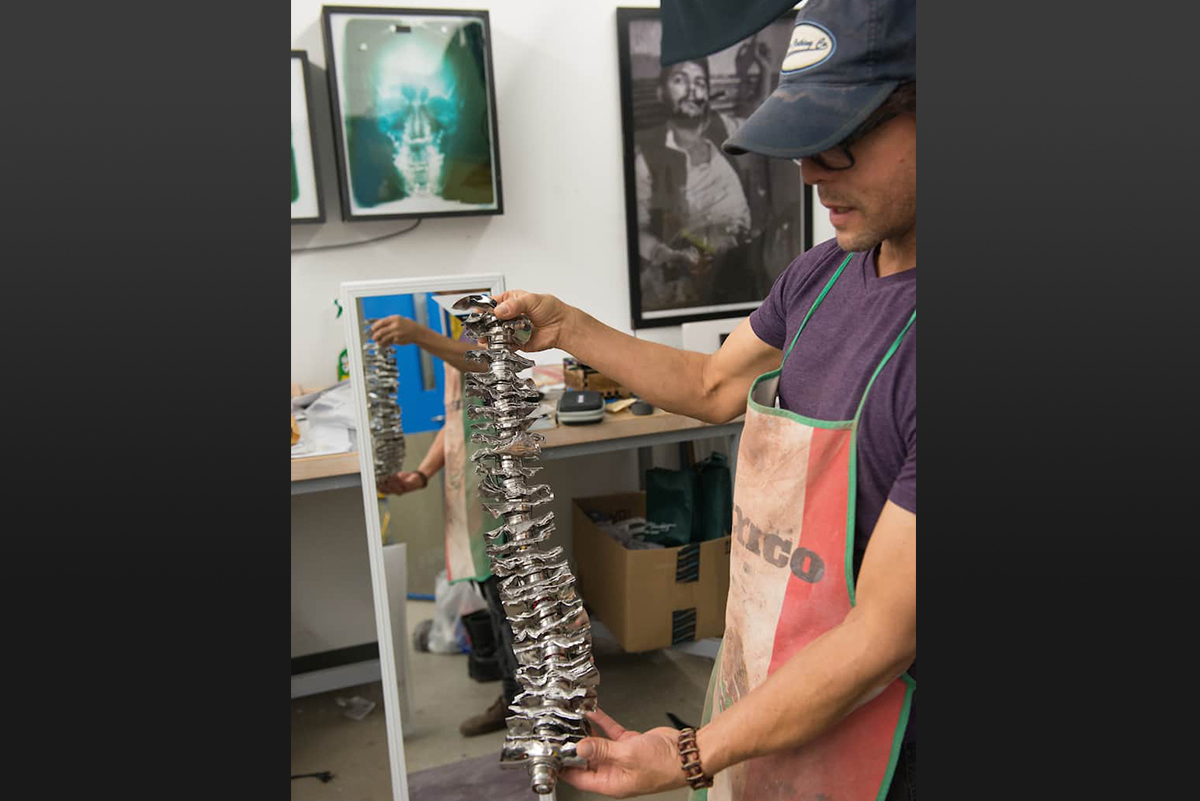
Rodríguez crafted two spines, one of which he wore for a performance piece titled Cacoon at the 8K on Broadway pop-up exhibition in San Antonio in 2016. He’s also been part of group performances in Austin, Mexico City, and Puebla, Mexico.

